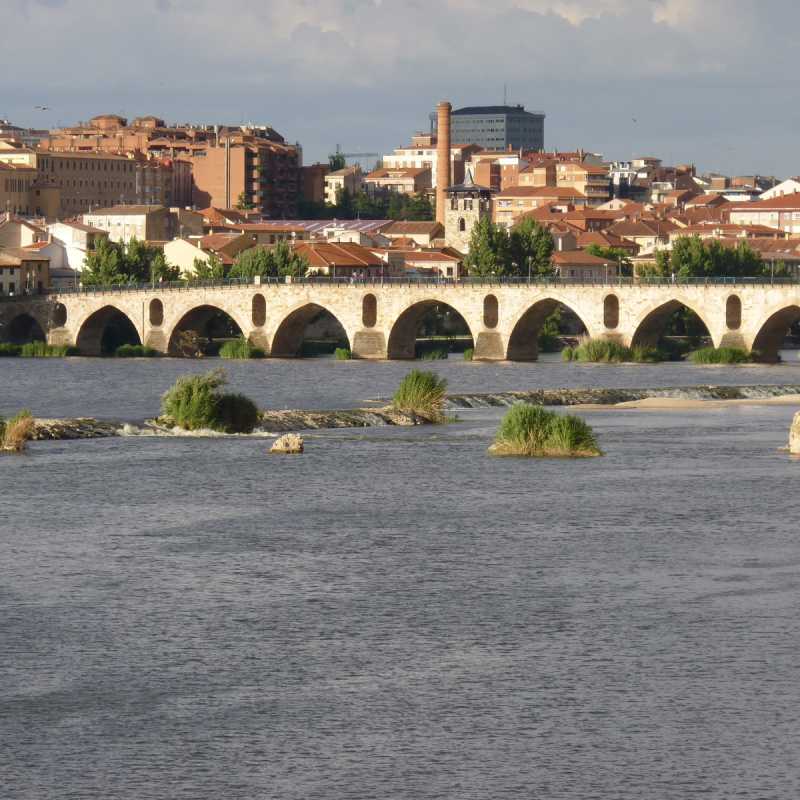
Zamora is located in the northwest of the Iberian Peninsula, just 255 km away from Madrid if you take the A-6 and A-11 motorways. Only 64 km south on the A-66 we find Salamanca; and 68 km to the north on the same road we run into Benavente on the way to León, 140 km away. Valladolid is only 100 km to the east on the A-11 and Braganza 100 km to the west on the N-122. The strategic geographical location of Zamora as a crossroads on the historic Vía de la Plata Route and the quality of its touristic and cultural opportunities make it a perfect place to set up camp and visit some of the most beautiful Spanish landmarks.
A splendid city: quiet and lovely to stroll around. With 66,000 inhabitants, it boasts of being a small city with great historical and cultural heritage.
As a destination which possesses remarkable endowing resources, its more than twenty Romanesque structures constitute the best example of this type of architecture in the peninsula. The Duero, the great river of Castile and Portugal and an icon of regional touristic references, presides over the city. The cathedral and its ribbed umbrella dome… the delicate modernist touch, the great medieval legacy with numerous figures, stories and legends: Doña Urraca, King Alfonso VI, El Cid the Warrior or el Cerco de Zamora (the Siege) and the recently inaugurated Castle of Zamora near the Museum of Baltasar Lobo, juxtaposing history and art.
Internationally recognized Zamoran artists include Baltasar Lobo and Coomonte, for example, along with poets: most notably Claudio Rodríguez and León Felipe. Art in its purest state combined with high-quality gastronomy and a landscape worth discovering.
Zamora is converting these resources into contemporary, relevant, fulfilling and provocative tourist experiences. Resources that, when you take into consideration both the quality and versatility of the tourist industry—lodgings, restaurants and retail—and the fact that it presents one of the best options in Europe in terms of value for money, make it possible to create open and malleable offers which can be modified practically “on demand” to meet the requirements of very specialized and segmented tourists.
A historic city: safe, cozy and open to the experience of visitors, but with totally up-to-date atmosphere and services.
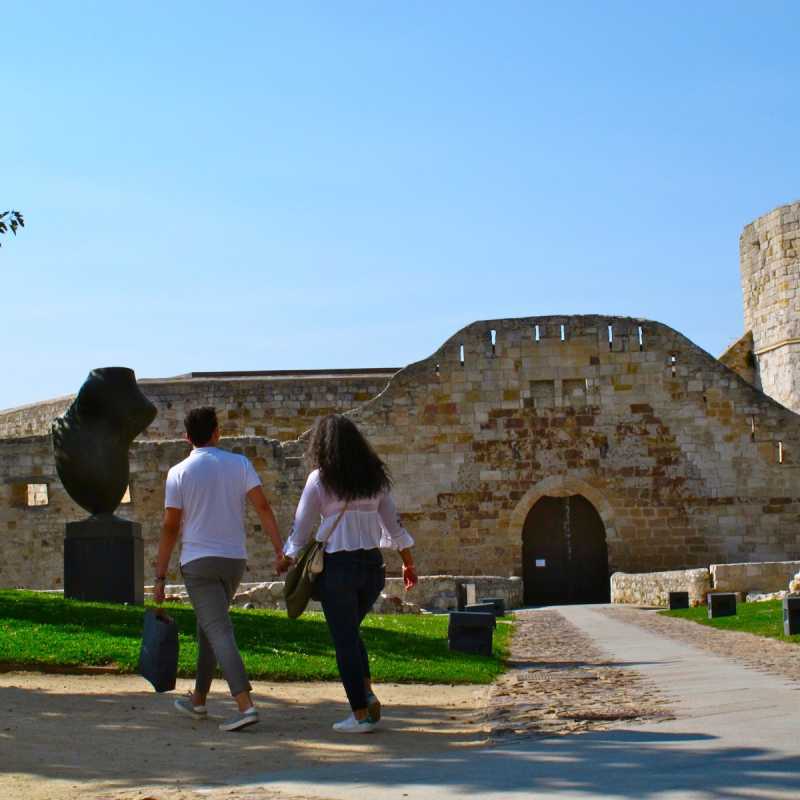
The past of Zamora tells us a lot about its present and future. The city’s history gives us the keys to understand its current urban blueprint. The Middle Ages and Romanesque art configured the layout of its streets and plazas, always conditioned by the river which has been and continues to be an integral part of this history and, of course, the planning of the town.
Everything seems to indicate that the first settlers of these lands were the Vaccaei. However, it was the imperial Romans who christened our city “Ocellem Durii” (Eyes of the Duero), making it one of many notable townships along the Roman road Via de la Plata, which stretched from Mérida to Astorga and crossed the mighty Duero River in Zamora. From these first contacts with Rome, the chronicles of the legendary Portuguese shepherd Viriato emerge. Towards the middle of the 7th century, the Arabs arrived in our town, calling it “Azemur” (wild olive grove) and “Semurah” (the turquoise city). Alfonso III the Great re-conquered and repopulated the town in 893 A.D. and surrounded it with a wall which converted it into one of the most important city fortresses of the Christian realms due to its location and virtues. In 981 A.D., it was taken by Almanzor “the terrible”, but years later was definitively returned to Christian hands. Fernando I of Castile repopulated the town in 1061 A.D. and not only rebuilt old structures but also began the fortifications which can still be contemplated today, making the town impregnable. He also granted the city its fuero, or legal jurisdiction. After Fernando I’s death, the lands were divided among his children, and Doña Urraca received the kingdom of Zamora. One of the most important events in the history of the city took place during her reign: El Cerco de Zamora (“The Siege of Zamora”). Sancho II, Urraca’s brother, attempted to unify the kingdom. After having deposed his other brothers, he laid siege to Zamora on March 4th, 1072: a battle which was to last over seven months, giving rise to a new saying: no se ganó Zamora en una hora (“Zamora was not overpowered in an hour”). The stalemate came to an end on October 7th of the same year when Bellido Dolfos assassinated the king outside the city walls. Pursued by el Cid the great warrior, he scurried back behind the walls through what is now known as “Loyalty Gate” or “Traitor’s Gate”, depending on who you ask. The golden age of our town was in the 12th century when the urban structure was configured and a significant portion of the most remarkable landmarks of the town were built in Romanesque style, giving the town its deserved epithet: “City of the Romanesque”. Throughout the 13th century, the frontiers of Castile were pushed further south with the Reconquista of territory from the Moors and Zamora ceased to have strategic interest for the kingdom, entering in a more dormant period. Even so, at the end of the Middle Ages, it continued to be one of the main bustling metropolises of Castile.
Subsequently, wars with Portugal would return this strategic value to our city and its territory.
In the 15th century, during the times of the Catholic Monarchs, it became the battleground for Isabelle I’s fight for the throne with her niece Joanna la Beltraneja (a derogatory term referring to her supposed illegitimacy, fruit of her mother’s supposed affair with Beltrán de la Cueva). In the battle for Toro on March 1st, 1476, Joanna’s consort Alfonso V of Portugal was defeated and Isabelle I and Ferdinand II’s reign was consolidated.
The conflict with the French, who occupied the town for over three years from 1809 to 1813, along with la Desamortización (the ecclesiastical confiscations and privatization of monastic properties) from 1835 to 1837 deeply affected the historical-artistic heritage of Zamora. Even so, the past of our city thoroughly authenticates yet another agnomen pronounced by Henry IV of Castile: “the Very Noble and Very Loyal”. The last two hundred years have seen the city develop slowly but surely, leaving some notable constructions, particularly in the east of the old town. Several noble mansions from the 19th century and some magnificent Modernist façades speak to us of a Zamora at the turn of the 20th century which shined in its own right.
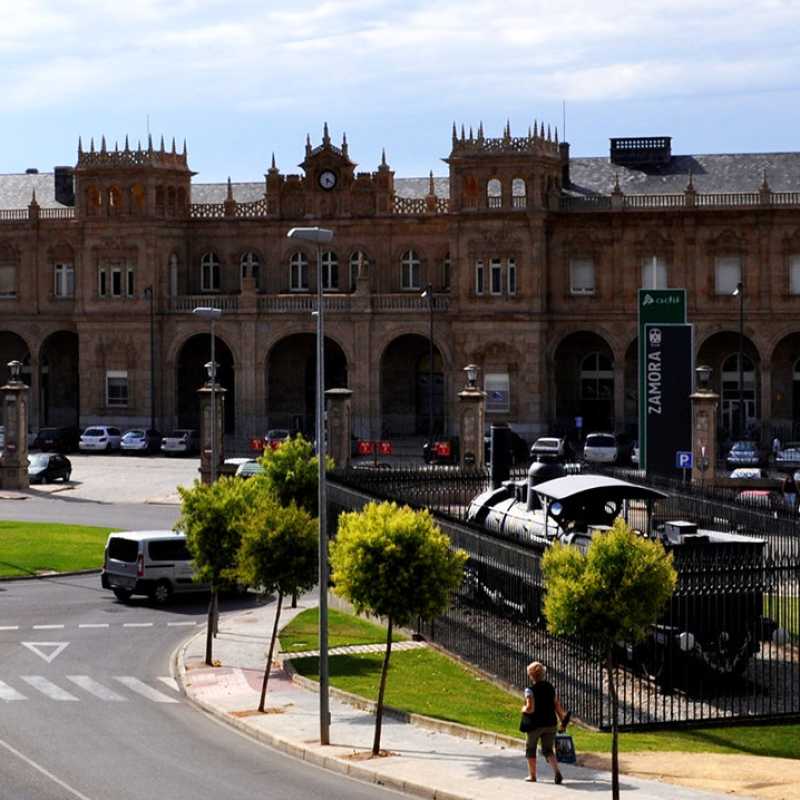
Connections with other Spanish cities
From Zamora to Madrid: six trains from Monday through Friday, four on Saturdays and Sundays.
From Madrid to Zamora: six trains from Monday through Friday, four on Saturdays and Sundays.
To Coruña: five trains during the week, three on weekends.
To Pontevedra, Santiago and Vigo: four trains during the week, two on weekends.
Renfe:
Ticket office and reservations. Tel. 912 320 320.
Renfe Station:
Carretera de la Estación, s/n.
Connections with other Spanish cities
There are also regularly scheduled bus and coach services, both national and international.
Estación de Autobuses: Federico Cantero Villamil, S/n. Tel. 980 521 281 – 980 521 282.
Avanza Bus:
The company Avanza Bus offers daily direct services to:
To Madrid: six coaches run daily with three different times on Sundays.
Tel. 980 520 952. Information and reservations: 902 02 09 99.
Alsa:
The company ALSA takes you to Asturias (Oviedo and Gijón), as well as Cáceres, Seville and Barcelona.:
To Barcelona: two coaches daily.
Oviedo: from Monday to Friday and Sunday, five coaches daily. Four on Saturdays.
Gijón: from Monday to Friday and Sunday, five coaches daily. Four on Saturdays.
Tel. 919 914 030. Information tel. 902 42 22 42 – www.alsa.es
alsa@alsa.es
The A-66 highway takes you north from Zamora to Benavente where it intersects with the main roads of the north: the A-52 (to Orense/southern Galicia), the A-6 (to La Coruña/northern Galicia) and the A-66 to Asturias. This same highway (A-66) connects Zamora with Salamanca towards the south, only 64km away.
On the stretch of the A-11 from Zamora to Tordesillas, the highway runs into the A-6 which goes to Madrid and the A-1 which goes to the north of the Peninsula: specifically the Basque Country.
The N-631 631 which goes towards Puebla de Sanabria also intersects with the A-52 (to Orense).
Heading west, the N-122 connects Zamora to the city of Bragança in neighboring Portugal.
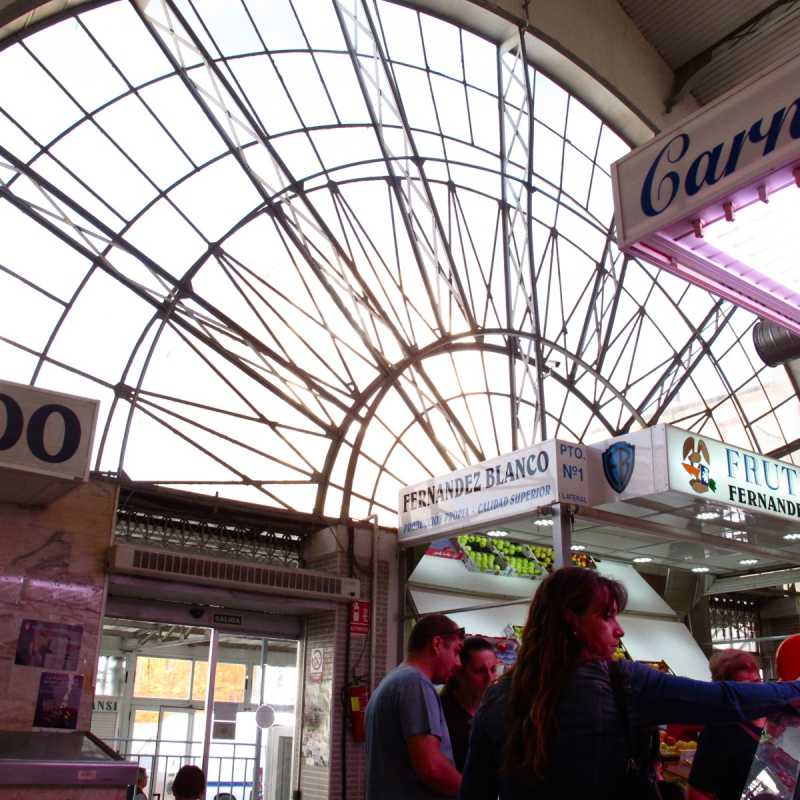
The cuisine of this land feeds on products with numerous stamps of quality, in a province which, from its inception, has specialized in the sector of food agriculture. Zamora cheese, legumes (chickpeas from Fuentesauco and lentils from Tierra de Campos), wild mushrooms, Aliste and Sayago veal, lamb, Benavente peppers, cured sausage… etc. And the bread, of course, from great grains, and the full-bodied wines of Toro, Tierra de Vino, Arribes del Duero and Valles de Benavente: four separate wine-making regions in such a small territory. These ingredients and many more constitute the basis for a traditional yet modern kitchen which dares to combine distinct flavours and establishes the roots of its dishes in local products.
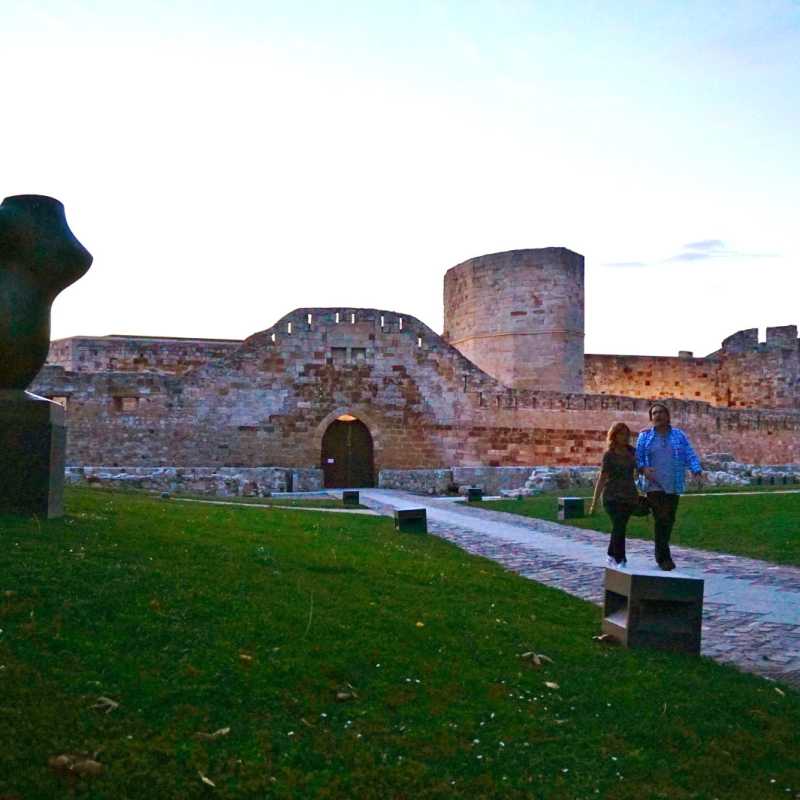
The castle represents the cornerstone of the defensive structures of the city. Both the building and its adjoining gardens underwent archaeological digs in 2009 which brought to light numerous previously unknown remains.
The most notable epoch of the castle took place in the Middle Ages and it maintained its original purpose until the Carlist War and was then renovated by the Bourbons and during the War of Independence. The floor plan takes the shape of a rhomboid and constitutes a splendid scenic overlook of the Cathedral, the River Duero and the Field of Truth where legend has it the contest between the Zamora knights and the Castilian nobles took place after the death of King Sancho II during the siege of the city his sister Doña Urraca reigned over.
From the castle, installed in the vertex of the first enclosure, the wall grows outward and was extended on three occasions from the 11th century to the 14th century to complete the three separate curtain walls, each of which represents a historic era.

Holy week is the most important religious, cultural, social and touristic event in Zamora. The great turnout and its popular character, as well as its rigorous austerity, create a strong contrast which reaches moments of vast intensity. Seventeen brotherhoods convert the streets of the city in scenery for Passion and a living museum from the Friday before Palm Sunday to Easter Sunday. The most important moments being the Swear of Silence, the Procession of the “Capas Pardas”, the intonation of the Miserere in the Yacente procession and the Brotherhood of Jesús Nazareno.
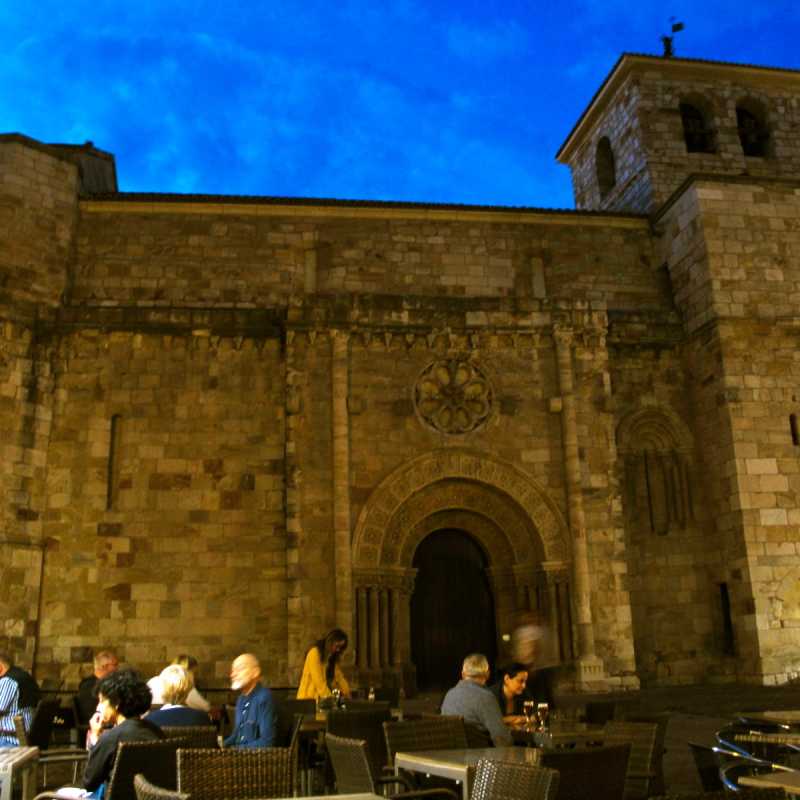
We start our architectural adventure in the Plaza Mayor, or Main Square:
the nexus of the commercial sector of town with the historic area. Here, we can appreciate
the difference between two distinct eras in the old Town Hall, now a police station, which
was built in the times of the Catholic Monarchs and stands opposite the new Town Hall whose
arches were constructed in 1766 although the latest reconstruction only dates back to the last century.
The Romanesque jewel of the Main Square is the church of San Juan de Puerta Nueva (12th century),
with the most elegant rose window in Zamora on its south side. On top of the tower we contemplate
a reproduction of a weather-vane imitating a popular folk figure known as the “Peromato”.
The original can be seen in the Museo Provincial.
Strolling down Corral Pintado street we arrive at the plaza of Santa María la Nueva, where we
can admire the Romanesque church of the same appellation. The impressively attractive chancel
hides a Baroque Cristo Yacente (Recumbent Christ) in its interior. This overwhelming work of
Francisco Fermín can be admired wandering the streets in the procession of the same name the
night of Maundy Thursday. Right next to this church, we find the Museo de Semana Santa (Easter
Museum) where a large portion of the pasos (or religious statues) that are carried by the
fraternal orders during Holy Week are on exhibit the rest of the year.
The Museo Etnográfico de Castilla y León towers over Barandales street and invites us to learn
about the history of our region through the daily lives of its people. This street brings us to
one of the most emblematic plazas of Zamora. Hidden among the London Plane trees, the statue of
Viriato, a Portuguese shepherd and legendary hero of Zamora, presides over the plaza named after
him. The surrounding buildings include the Antique Hospital de la Encarnación (17th century) which
is the current seat of the Diputación Provincial, and on the opposite side of the square, we find
the Palace of the Counts of Alba de Aliste (15th century) which has been converted into a Parador
Hotel. On one of the corners of the plaza, what was the church of la Concepción (17th century) now
is home to the Archivo Histórico Provincial. Next to the Archive going towards the river, we find
the house of culture library and finally the Romanesque church of San Cipriano which like many
other churches in town was partially rebuilt in the 12th century. The oldest preserved part of
the church is the apse and some relief sculptures which were reused on its exterior walls.
Continuing our route down Rua de los Francos, we come across a popular favorite in town: the
church of la Magdalena. Its richly ornate facade makes it one of the most beautiful temples
of the town. Despite its late construction, as work continued until the 13th century, it is
considered one of the most elegant and emblematic representations of Zamora’s particular Romanesque
style, mostly thanks to its abundant sculptures decorating the facade. It belonged to the Knights
Hospitaller of Saint John of Jerusalem. .
Opposite the Magdalena, the Convento del Tránsito with its coat of arms of the Osorio family above
the lintel speaks of the family that financed its construction in the 16th century.
We continue down the street until we reach the Iglesia de San Ildefonso whose neoclassical
façade hides the original Romanesque walls behind it. Inside the church and above the High
Altar the remains of Saint Ildephonse (patron saint of the city along with Saint Peter) and
Saint Attilanus rest. A lovely and discrete arch supporting one side of the church leads us
to the other facade: the south side which is supported by two svelte flying buttresses which
rest on what was once the palace of the Marqueses de Villagodio, and is now the Convento de
las Marinas.
The plaza de Fray Diego de Deza, popularly known as the plaza of the lime blossoms, leads
us to yet another plaza: Arias Gonzalo. Here we find the infamous Mirador del Troncoso with
the most spectacular view of the majestic Duero River and its bridges.
Leaving this scenic viewpoint behind, the narrow Troncoso Street widens into the plaza
of Antonio del Águila and its harmonious gardens which, in turn, take us to the Cathedral.
The infamous Cathedral of Zamora is known as “the pearl of the Duero” or “the Jewel of
the Romanesque”. Built upon the ruins of the previous basilica destroyed by Almanzor in
986 A.D., work began in 1151 A.D. and the church was consecrated in 1174 A.D. only 23
years later. Without a doubt, the most amazing and original aspect of the temple is its
magnificent dome with Byzantine influences. A fire destroyed the north side of the church
and the cloisters in 1591 A.D. A new cloister was built in the 17th century along with the
main entrance which has the aspect of a triumphal arch. The south side, or Bishop’s side,
is the only remaining original wall where among its decorative elements we can contemplate
a Byzantine Virgin with Child.
Next to the Cathedral, we find the Casa del Cid Campeador where, according to legend,
this outstanding warrior lived in Zamora thanks to the hospitality of the governor at
that time: Arias Gonzalo.
Continuing north along Postigo Street we run into the Romanesque church of San Isidoro
which dates back to the times of Alfonso VII the Emperor and his sister Sancha, and whose
construction was inspired by the relocation of the remains of Saint Isidore from Seville
to León. Next to this church we find the mythical Portillo de la Traición (Traitor’s Gate),
recently also called Portillo de la Lealtad (Loyalty Gate), through which Bellido Dolfos ran
to safety in the 11th century after having assassinated King Sancho II of Castile during
the infamous siege known as el Cerco de Zamora.
Among the lush gardens surrounding the Cathedral, we discover the Castle of Zamora,
recently renovated and opened to the public in 2009. The archaeological treasures found
during the restoration and now on display include cisterns, Visigoth tombs, smelting ovens,
water channels, a water well, towers and much more.
If we then go south through the Bishop’s Arch next to la Casa del Cid, and continue down
to the river, we can contemplate the Aceñas de Olivares. These flour mills with waterwheels
from the 10th century were the first industry of our city. At first, they belonged to the
monarchy of León. In the 12th century, they became property of the Church until the ecclesiastical
confiscations of Mendizábal in the 19th century when they were acquired by nobles in Zamora who
better exploited them and put them to new uses.
Next to the mills, we can appreciate the Romanesque church of San Claudio de Olivares in the
neighborhood sharing the same name. It was probably founded in the 12th century. Yet
another Romanesque church stands not far away: Santiago de los Caballeros. According
to legend, el Cid the great warrior was knighted in this temple by King Ferdinand I of
León.
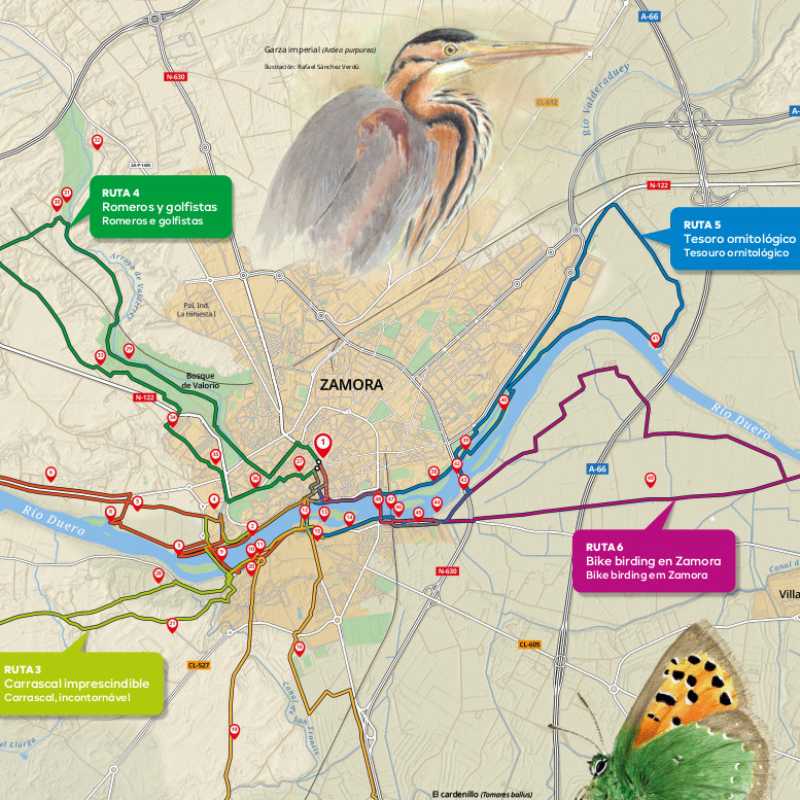
These 6 family-friendly and circular routes around Zamora highlight its environmental, landscape and heritage value.
Pedal between legendary walls, water mills, centuries-old bridges and natural viewpoints. Listen to the rich bird life of the forests, the Duero and the Valderaduey rivers. Visit hermitages, archaeological sites, and enjoy the best of Zamoran gastronomy!
These routes with gentle gradient, and distances between 10 and 20 km, can be done in any season, even walking. Created by passionate cyclists, they allow you to discover the city and its surroundings in a sustainable and fun way.
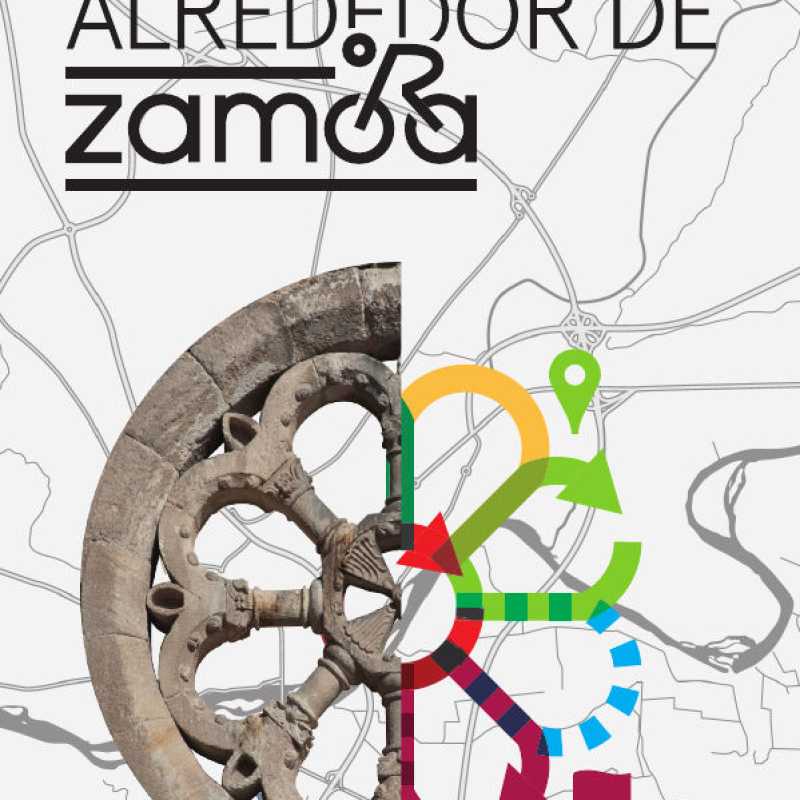
Find bellow nine circular routes around the municipality of Zamora. Routes to enjoy mountain biking or even walking. All begin and end in the Plaza Mayor de Zamora. Soft gradients and distances between eight and thirty kilometers. With natural, scenic, historial and cultural points of interest. These routes can be done at any season. Because of the difficulty can be made by beginners and due to their interest and beauty also experts will enjoy.
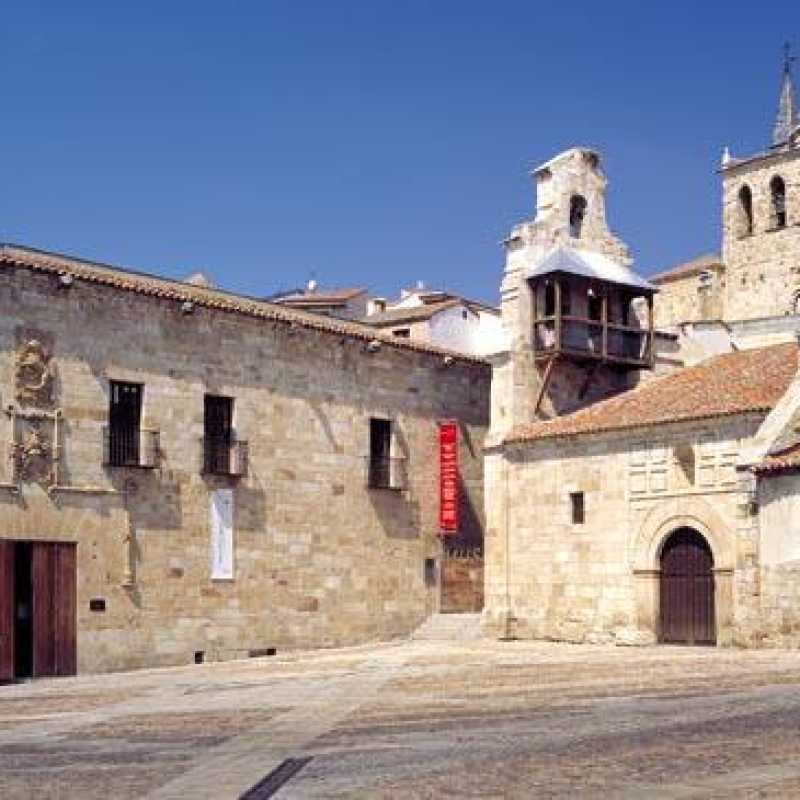
The Museo de Zamora is located in the
Palacio del Cordón—one of the most interesting works of civil architecture
in Zamora from the beginning of the 16th century—and the neighboring
church of Santa Lucía. The combined constructions constitute one of
the most evocative sites of the old town, and more specifically of the
neighborhood which in medieval times was known as “The People of the
Valley”. The most characteristic element of the noble façade of the
palace is the namesake Cordón or Franciscan rope found around the posts
and lintel of the majestic entranceway with the owners’ coat of arms
presiding above it. This door gives access to the temporary exhibits,
conference room and library. Behind this emblazoned house a new cubic
building has been added on: a work of the architects Tuñón and Mansilla.
The clever designers reused and integrated certain antique constructive
elements into the exhibits of the interior such as the remains belonging
to the arches of the old patio and parts of the original stairs.
Here we find the permanent exhibit and a small annex used for storage
of additional archaeological pieces as well as the restoration workshops.
The Museum is divided in two sections: Archaeology and Fine Arts.
The first takes us on a journey through the history of the province from
the Paleolithic to the Modern Age. The second shows works of art—sculptures
and mainly paintings—from the 14th to the 20th century. The final touch of
the visit is an exhibit with elements that exemplify the historic evolution
of the town itself.
Its most memorable pieces include the bell-shaped urn from Villabuena del
Puente which dates to the Bronze Age; the Celtiberian Collection of Arrabalde
composed of a spectacular variety of pre-Roman gold and silver jewelry;
medieval coin collection from the plaza Arias Gonzalo; Roman stele from
Villardiegua de la Ribera, among many others.
Contact Info:
Plaza de Santa Lucía 2, 49002 Zamora
Tel: 980 516 150
Fax: 980 535 064
museo.zamora@jcyl.es
Hours:
Permanent exhibit from Tuesday to Saturday:
- October to June: from 10:00 a.m. to 2:00 p.m. and from 4:00 p.m. to 7:00 p.m.
- July to September: from 10:00 a.m. to 2:00 p.m. and from 5:00 p.m. to 8:00 p.m.
Sundays from 10:00 a.m. to 2:00 p.m. On bank holidays, consult the museum.
Temporary exhibits from Tuesday to Saturday: 7:00 p.m. to 9:00 p.m.
Saturdays:
- October to June: from 12:00 noon to 2:00 p.m. and from 4:00 p.m. to 7:00 p.m.
- July to September: from 12:00 noon to 2 pm and from 5:00 p.m. to 8:00 p.m.
Sundays from 12:00 noon to 2:00 p.m. On bank holidays, consult the museum.
Tickets:
General admission: 1 euros
Free of charge: retirees and students
Free admission:
Saturdays and Sundays.
Groups must make reservations ahead of time.
Free guided visits: Saturday at 17:30 pm and Sunday at 12:30 pm.
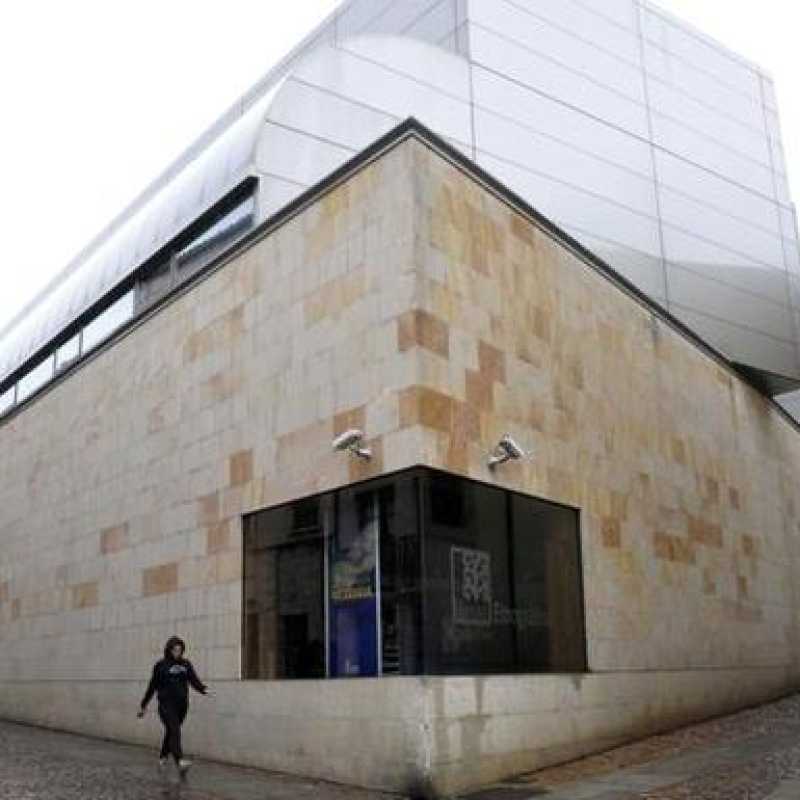
The Museo Etnográfico de Castilla y León
opened its doors towards the end of 2002. The idea for its creation, fostered
by the Junta de Castilla y León, arose from the necessity to create a dynamic
centre which could house an enormous collection of assorted historical objects
related to the traditions, uses and customs of our people: the historical
patrimony of centuries of history. More than just a museum, or a static
warehouse, it was meant to be a place that centralized the study and
diffusion of scientific disciplines related to our ethnographic legacy.
Caja España donated an impressive collection of material patrimony
(nearly 10,000 pieces) and non-material, as well: graphic and audiovisual
documents. Finally, the Junta de Castilla y León promoted the construction
of a building in Zamora and, once the space was created, put the Fundación
Siglo in charge of the Museum. The purpose and desire of the Ethnographic
Museum of Castilla y León, in Zamora, is to encourage visitors to reflect
on certain aspects that affect individuals, their collective lives in society
and their capacity to confront difficulties presented by their environment
using an extraordinary collection of objects of incalculable ethnographic
worth such as basic tools, farming instruments, pottery and popular
ceramics, garments, amulets and a very long et cetera.
Contact Info:
C/ Sacramento s/n, 49004 Zamora
Tel: 980 531 708
Fax: 980 508 269
info@etnografico.org
Hours:
- Tuesday to Sunday: from 10:00 a.m. to 2:00 p.m. and from 5:00 p.m. to 8:00 p.m.
Tickets:
General Admission: 3 euros
Reduced Price: 1 euro
(with the corresponding accreditation)
Over 65 and pensioners, large family, youths from 8 to 18 years old, university
students, groups of 8 or more people (only with prearranged reservation),
schoolchildren and under (0 – 8 years)
Free Entry:
- Sunday afternoons
- Tuesday through Thursday: from 7:00 p.m. to 8:00 p.m.
- April 23rd (Día de Castilla y León)
- May 18th (International Museum Day)
- October 12th (Columbus Day)
- January 6th (Epiphany)
(with the corresponding accreditation)
- Under 8 years old, disabled, Museum Associates (ICOM, AVA, CIMAM, AEM …);
professional teachers; Official Tour Guides of Castilla y León; Journalists;
the Unemployed; Friends of the Museum; Fundación Patrimonio Histórico;
Contributors of the Museum, Youth Card and international equivalents.
Ease of Access:
Exhibits and facilities are accessible by wheelchair or with strollers.
Arranged visits:
For arranged visits, call the Museum or write an email or a letter.
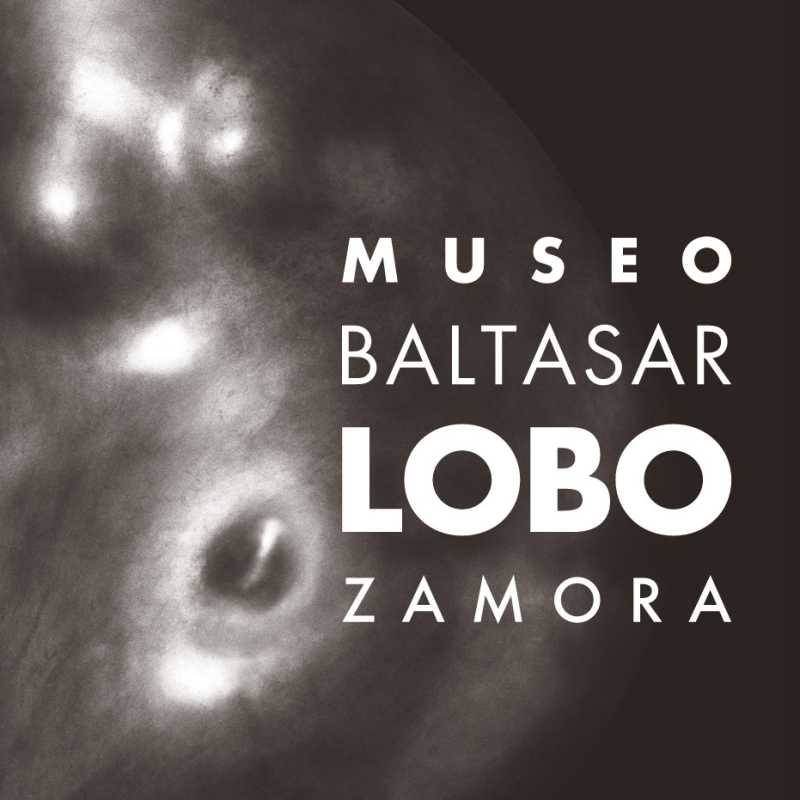
What used to be the “Casa de los Gigantes” which
housed the Gigantillas and Cabezudos of the city festival parades is now the
museum dedicated to the contemporary sculptures of Baltasar Lobo Casquero.
Born in Cerecinos de Campos in 1910, this Zamora sculptor demonstrated great
talent for the plastic arts when he was very young and further developed his
talent with age and training. In spring of 1939, Lobo arrived in Paris and,
with the help of Picasso, came to know some of the most important figures
of the epoch like Julio Gonzalez, Pevsner and, above all, Henri Laurens.
In this city, most of Lobo’s life and works took shape. In 1993, at the peak
of his creative talent, he passed away in Paris at the age of 83.
This museum conserves a large portion of the legacy of this Zamoran artist.
Among his extensive repertoire, an extraordinary series on motherhood
demonstrates his supple sensitivity and natural talent. Fragments of human
body parts, torsos for example, exemplify a break from his obsessive
classicism and his newfound inclination towards the abstract, surpassing
the talent in many cases of his best contemporaries. On display, visitors
can enjoy sculptures, paintings, sketches and tools of the artist among
other things.
Hours:
September 14th to November 2nd
Tuesday to Sunday: from 10:00 a.m. to 2:00 p.m. and from 5:00 p.m. to 8:00 p.m.
November 3rd to March 30th
Tuesday to Sunday from 10:00 a.m. to 2:00 pm and from 4:00 p.m. to 6:30 p.m.
April 1st to June 30th
Tuesday to Sunday: from 10:00 a.m. to 2:00 p.m. and from 5:00 p.m. to 8:00 p.m.
July 1st to September 13th
Tuesday to Sunday: from 10:00 a.m. to 2:00 p.m. and from 6:00 p.m. to 9:00 p.m.
For hours on bank holidays, consult the Municipal Tourist’s Office Tel: +34 980 533 694
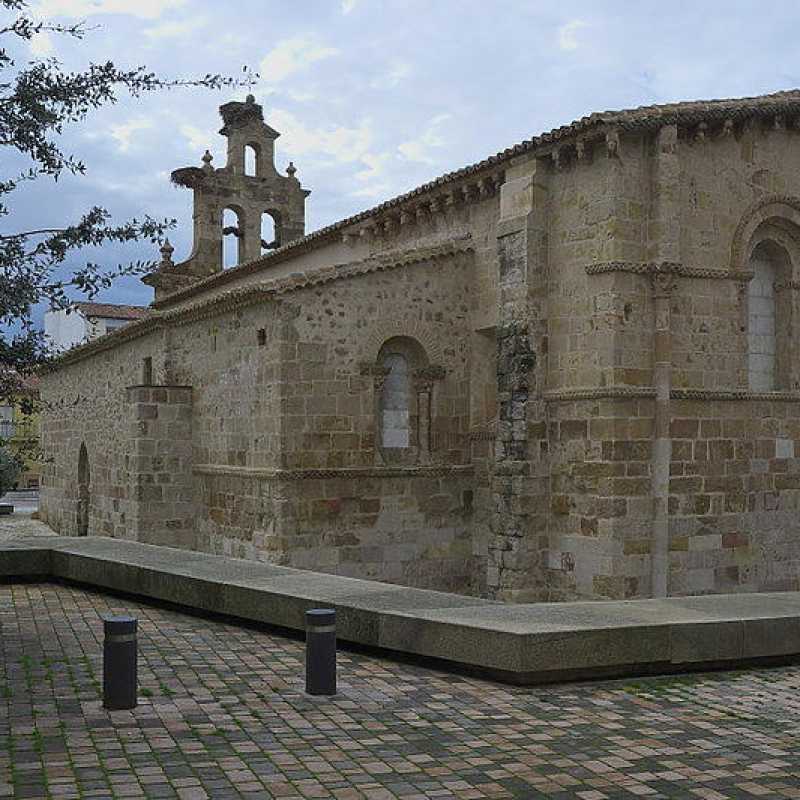
The Museo Diocesano of Zamora, inaugurated
in July 2012, is located in the Romanesque church of Santo Tomé. Inside,
the Dioceses of Zamora puts on display in a didactic manner the most
important content of the Catholic faith using one permanent exhibit and
another temporary one filled with remarkable works of Christian art.
The former includes one hundred and thirty-four works of sculpture,
painting, precious and non-precious metal workings, furniture and stone
objects which represent the artistic styles of various eras from the 1st
century through the 19th century: Hispania Roman, Visigoth, Romanesque,
Gothic, Renaissance, Baroque, Neoclassical and Colonial.
Contact Info:
Iglesia de Santo Tomé, plaza de Santo Tomás s/n, Zamora
Tel: 980 531 933
catedral@diocesisdezamora.es
Hours:
Monday to Saturday: from 10:00 a.m. to 2 pm and from 5:00 p.m. to 8:00 p.m.
Sundays and holidays: from 10:00 a.m. to 2 pm.
We recommend you verify opening hours using the Cathedral website www.catedraldezamora.wordpress.com
or calling the Tourist’s Office tel. +34 980 533 694
Tickets:
General Admission: 3 euros. Only temporary exhibit: 1 euro
Reduced price: 2 euros Pensioners, students and groups between 10 and 20 people.
Free mondays 17.00 to 20.00 and also for under 12 yrs.
Audio-guides available
Full Admission: Cathedral + Cathedral Museum + Dioceses Museum 6 euros
Reduced price: 3.50 euros Pensioners, students and groups of 20 or more people
Free entry on Monday afternoons, except for long weekends and bank holidays.
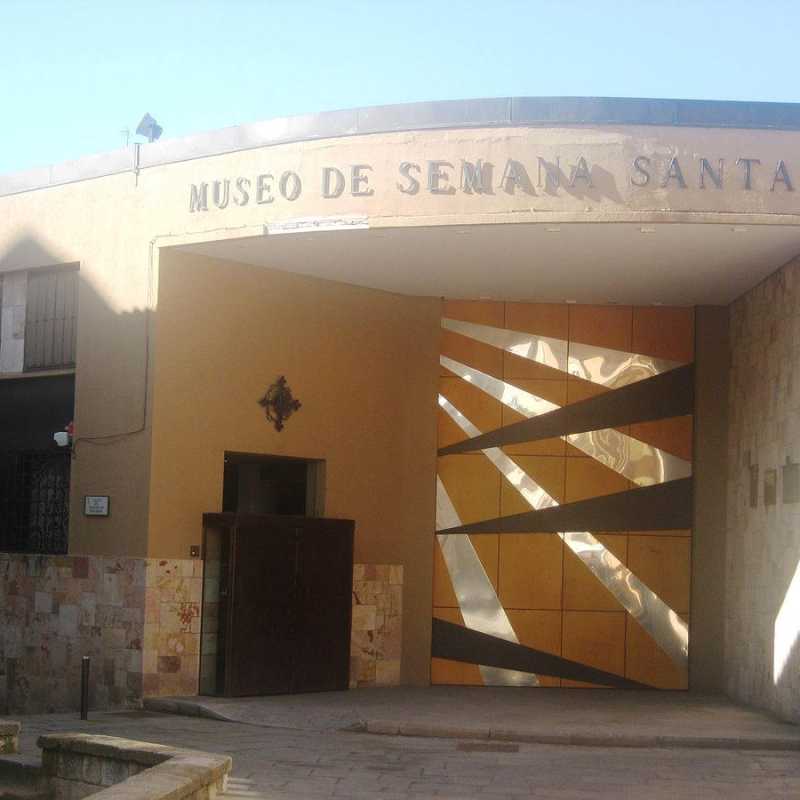
Created by the Junta Pro Semana Santa
(pro-Easter Board) in 1957 in order to preserve and display the diverse
pasos, or religious sculptures mounted on platforms, that process in the
streets of Zamora during our acclaimed Holy Week, the Museo de Semana
Santa opened to the public on September 9th, 1964.
The first documented reference to the celebration of Easter in Zamora
dates back to the 13th century. During the High and Late Middle Ages,
the monasteries and convents in Zamora—especially those of the Mendicant
orders—organized processions in streets near their parishes. At that time,
they were attempting to show the common people, with a marked didactic and
spiritual intention, the passages of the Passion, Death and Resurrection
of Jesus Christ. Easter was a valuable Catechism which transmitted the
Christian message in an impressively memorable way. Despite the passage
of time, the city of Zamora has wisely been able to respect and maintain
the original character and intentions of its processions: austerity,
silence and prayer—three characteristics which clearly best define our
Holy Week. The antiqueness of the brotherhoods perfectly complements
the quality of the religious sculptures. The Holy Week Museum located
in the historic old town is home to thirty-seven pasos which sequentially
relate the Passion of Christ. Their creators include religious artists like
Ramón Álvarez, Mariano Benlliure, Quintín de la Torre, Aurelio de la
Iglesia and Ricardo Segundo, among others.
Contact Info:
Plaza de Santa María la Nueva nº 1, 49001 Zamora
Tel: 980 532 295
Fax: 980 536 072
Hours:
- Tuesday to Saturday: from 10:00 a.m. to 2:00 p.m. and from 5:00 p.m. to 8:00 p.m.
- Sunday y festivos: de 10.00 a 14.00 horas
Tickets:
- General Admission: 4 euros
- Reduced Price: 2 euro
- Niños menores de 12 años y grupos de 25 o más personas
- Tasa por grabar: 1 euro
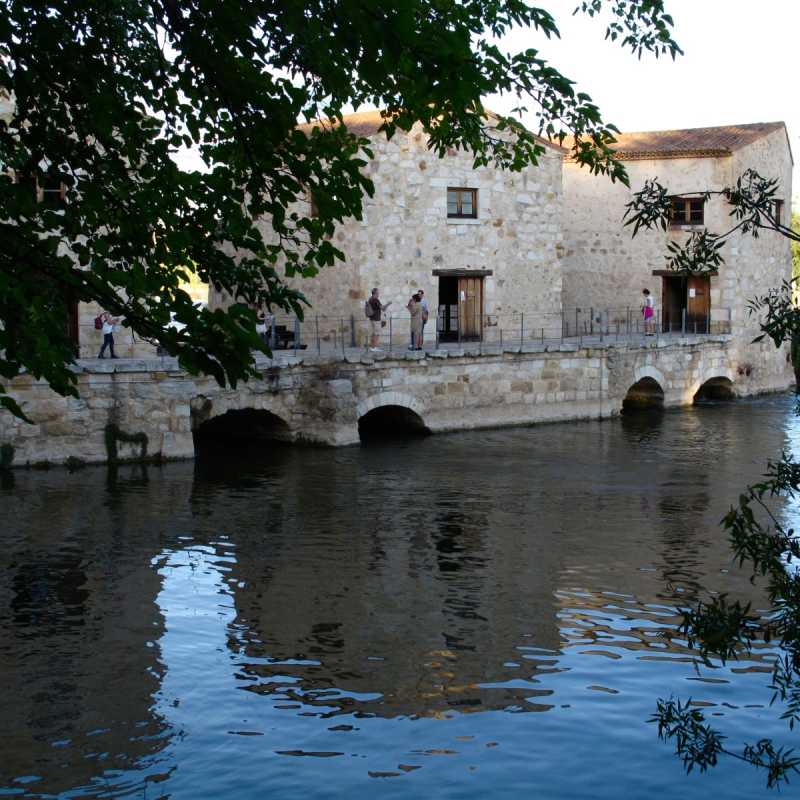
In the 10th century, the Aceñas de Olivares
established themselves as the first industry in our city. The word “aceñas”
comes from the Arabic “as-saniya” which means “that which lifts” referring to
the wheels which lifted water from the river and put the flour mills in motion.
These clever inventions took advantage of the natural river flow to move grinding
stones and convert grain into flour.
In July 2008, they were re-inaugurated after an extensive restoration. Its
conversion into a tourist attraction has not only recuperated its physical
structures in the three different types of mills (the piston hammer, fulling
mill and gristmill) which in and of themselves are worth a visit, but also
visitors can have the unique experience of:
- Walking on the river Duero, with all of its implications: the wind, the
force of the water, the mystery, the nature, the light, etc…
- Being a witness of how, in the 10th century, human intelligence once
again overcame the obstacles of nature, imposed its will and took advantage
of the force, occasionally savage, of a river for its own survival.
Contact Info:
Town Hall Tel: +34 980 548 700
Tourist’s Office Tel: +34 980 533 694
Hours:
September 14th to November 2nd
Tuesday to Sunday: from 10:00 a.m. to 2:00 p.m. and from 5:00 p.m. to 8:00 p.m.
November 3rd to March 30th
Tuesday to Sunday from 10:00 a.m. to 2:00 pm and from 4:00 p.m. to 6:30 p.m.
April 1st to June 30th
Tuesday to Sunday: from 10:00 a.m. to 2:00 p.m. and from 5:00 p.m. to 8:00 p.m.
July 1st to September 13th
Tuesday to Sunday: from 10:00 a.m. to 2:00 p.m. and from 6:00 p.m. to 9:00 p.m.
For hours on bank holidays, consult the Municipal Tourist’s Office Tel: +34 980 533 694
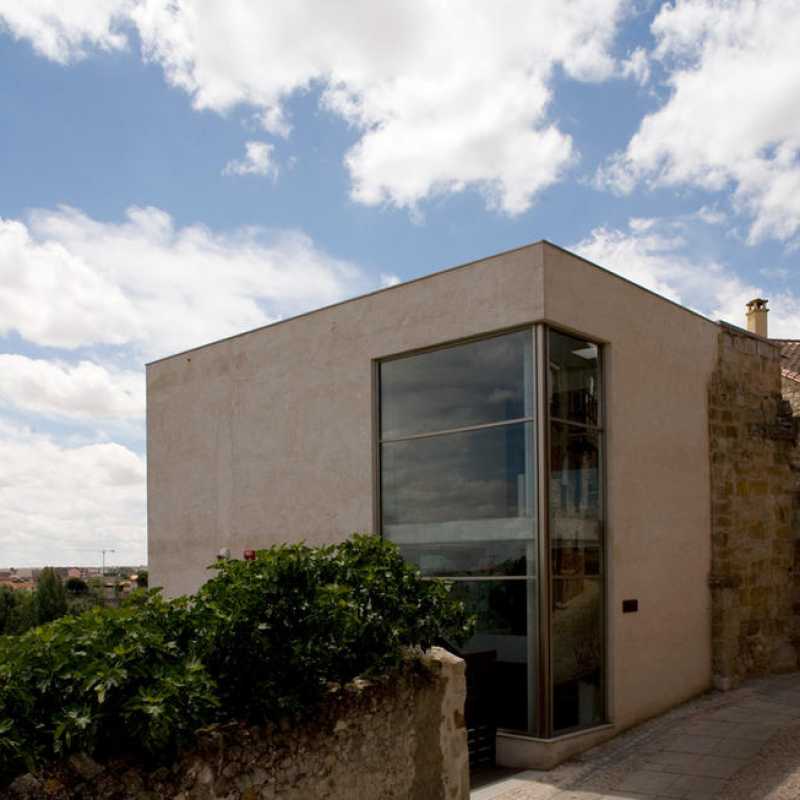
The Centro de Interpretación de las Ciudades Medievales, located between the Duero and the historic center of the old town, allows us to delve into the world of the Dark Ages along diverse paths. It is a mediating space of dialogue. On the one hand, it presents a reflection on Zamora and the structure of medieval towns, and on the other, the possibility to enjoy a unique space: the Zen Overlook, the other dimension of the river. This avant-garde building with a spectacular view of the great Duero River reveals to visitors the formation of cities in the Middle Ages: the architecture, the social hierarchy and women’s role in the society among others.
Hours:
September 14th to November 2nd
Tuesday to Sunday: from 10:00 a.m. to 2:00 p.m. and from 5:00 p.m. to 8:00 p.m.
November 3rd to March 30th
Tuesday to Sunday from 10:00 a.m. to 2:00 pm and from 4:00 p.m. to 6:30 p.m.
April 1st to June 30th
Tuesday to Sunday: from 10:00 a.m. to 2:00 p.m. and from 5:00 p.m. to 8:00 p.m.
July 1st to September 13th
Tuesday to Sunday: from 10:00 a.m. to 2:00 p.m. and from 6:00 p.m. to 9:00 p.m.
For hours on bank holidays, consult the Municipal Tourist’s Office Tel: +34 980 533 694
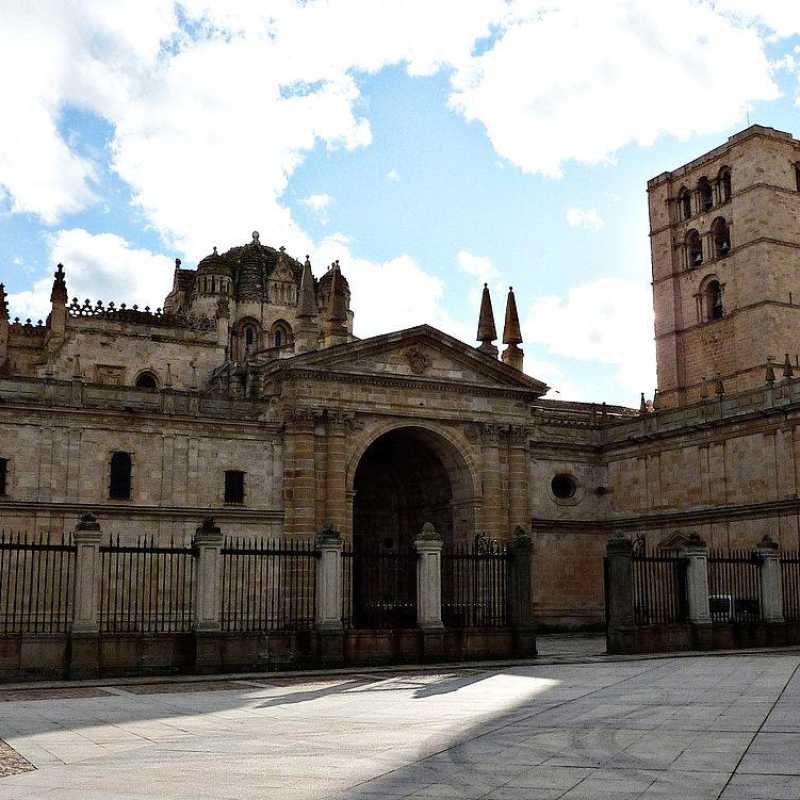
The Museo Catedralicio was inaugurated in 1926
with the expressed purpose of creating a space which would display to the
public the works of the Cathedral itself and the parishes of the diocese.
Entering through the cloister of the Cathedral, visitors can enjoy one of
the most magnificent collections of Flemish tapestries including the
Tarquinio Prisco masterpiece made in Flanders around 1475 and those of
the Trojan War among others. More ecclesiastical treasures await including
the processional pyx, originally completed by Pedro de Ávila in 1515, and
la Virgen con el Niño y San Juanito (the Virgin with Child and Saint John),
carved into Carrara marble in the 16th century and attributed to the
sculptor Bartolomé Ordóñez, from Burgos
Contact Info:
Plaza de la Catedral s/n, 49001 Zamora
Tel: 980 530 644
Fax: 980 530 644
catedral@diocesisdezamora.es
Hours:
Consult the web pages of the Cathedral www.catedraldezamora.wordpress.com
or the Tourist’s Office tel. +34 980 533 694
Tickets:
General Admission: 4 euros Includes Cathedral Museum + Cathedral
Reduced price: 2 euros Retirees, students and groups of 20 or more people
Free for under 12 yrs and members of “Friends of the Cathedral” (must show ID)
Audio-guides are available
Full Admission: Cathedral + Cathedral Museum + Dioceses Museum 6 euros
Reduced price: 3.50 euros Retirees, students and groups of 20 or more people
Free entry on Monday afternoons, except for long weekends and bank holidays.
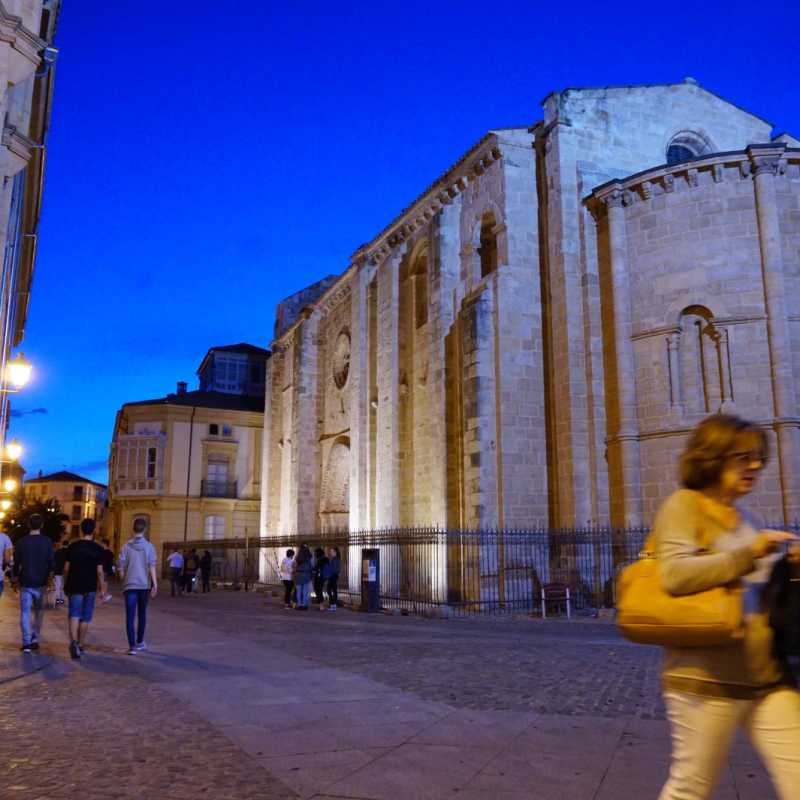
La Magdalena (late 12th c.). The most beautiful Romanesque church of the city, for its great elegance, decorative motifs and magnificent apse. Inside a singular example of 12th c. Romanesque funerary sculpting can be found.
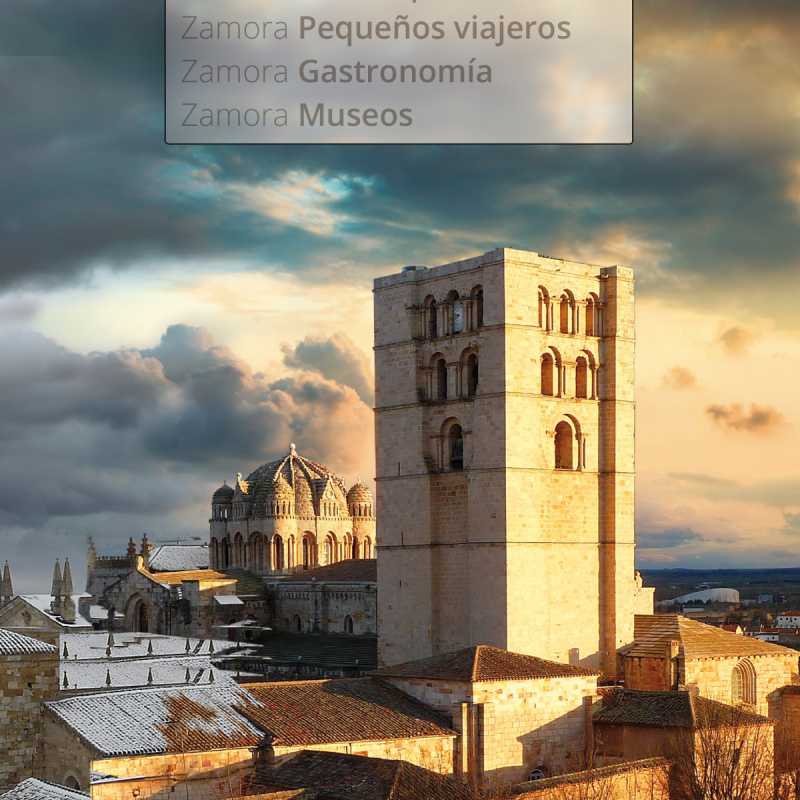
Zamora’s Romanesque has been tortured mercilessly by, and yet recovered satisfactorily from, the trauma of wars, expatriations and amputations; has borne unquestionable sages and unpredictable savants; has suffered impassively our importunate conversations and our pretentious remarks, our poster publicity, our automobiles, our outdoor festivals and even our urine.
From the balcony beside Bishop’s Gate, we behold the river and the Romanesque that its waters have already fed upon, docile and discretely, without a care in the world: San Miguel in Gormaz,
San Baudelio in Berlanga, San Miguel in Almazán , the del Cristo chapel in Coruña del Conde and Santa Cruz in Maderuelo, Sacramenia, Valbuena, Retuerta, Simancas and Toro, every now and again some more ancient obscure relative like San Román de Hornija...a long furrow to plough for such a modest navigator. Further on, very close to the city of Zamora, its serpentine banks brush past San Pedro de la Nave, another ancestor, and take in newer subsidiary courses before delving into the steep rocky valleys of los Arribes Natural Park, catching its breath to become more zestful and cheerful to finally plunge towards the ocean and the Islands of Paradise where the sun goes into hiding.
The Romanesque of Zamora lacks the polychromatic granite grandiosity of Santiago’s Portal of Glory and its evangelical tympanum of “ordo prophetarum”; it does not try to compete with the sculptors of San Vicente de Ávila, the most select master chefs of Burgandy, nor does it dismantle the royal solemnity of León’s Romanesque. However, the stones in Zamora represent the sum total of the aforementioned: a veritable Romanesque flood savoured and cradled... Romanesque of extreme advanced Durii, decorated by its ashlars’ cavities and engraved with silvery interstices titivating every course... Romanesque resting near the path, “on the road” for many years... with hopes that you may see it, feel it, remember it and miss it.
The Romanesque of Zamora’s capital stuns through its hybrid and synthetic personality— exquisite frontier architecture, with Roman floor-plan chords and exotic Moorish notes—able to make your hair stand on end with its frank arpeggios and military drum rolls. It is a Romanesque on the threshold of Leonese Extremadura which strings together the practiced ingredients from the Esla further upriver, and joins Castilian saps from Ávila de los Caballeros to later—following the “Vía de la Plata” Roman road—impregnate the Salamanca and Mirobricenses nuclei. The chancel of
Santo Tomé, the Bishop’s Gate, the sepulchre of la Magdalena, the capitals in the interior of San Juan de los Caballeros or the crumbling calendar of San Claudio are only a few beats to be heard when auscultating the heart of this unique Romanesque ensemble able to captivate even the most harried traveller.
Article...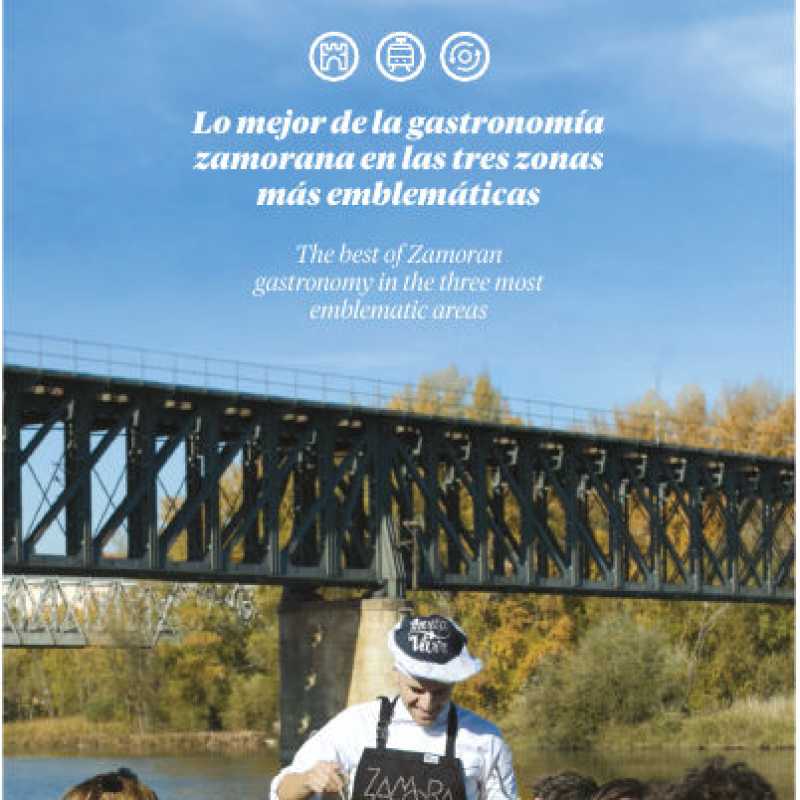
Zamora gastronomy is defined by high quality local and natural products. Result of a more common grazing in the west and of the farming in the east of Zamora’s lands, divided by the river Douro into the “Tierra del Pan y del Vino”. The other pillar, artisanal elaboration, produces culinary reference ingredients like: wines, cheeses, sausages, flours, honeys...
From ancient stews deeply rooted in taste and traditions we inherit dishes and tapas well seasoned and appetizing, the famous recipes of Zamora.
During Holy Week enjoy garlic soup, “el dos y pingada”, cod “a la tranca”, Lent eve stew, “las aceitadas, las torrijas” and caramelised almonds.
The city restaurateurs regularly create new dishes and tapas and keep this legacy for the bliss of travellers and locals.
This guide includes many places, but more restaurants and bars exist in Zamora where to get lost and break away with exquisite bites.
Enjoy Zamora, its gastronomy, its history, people and genuine treasures!
Article...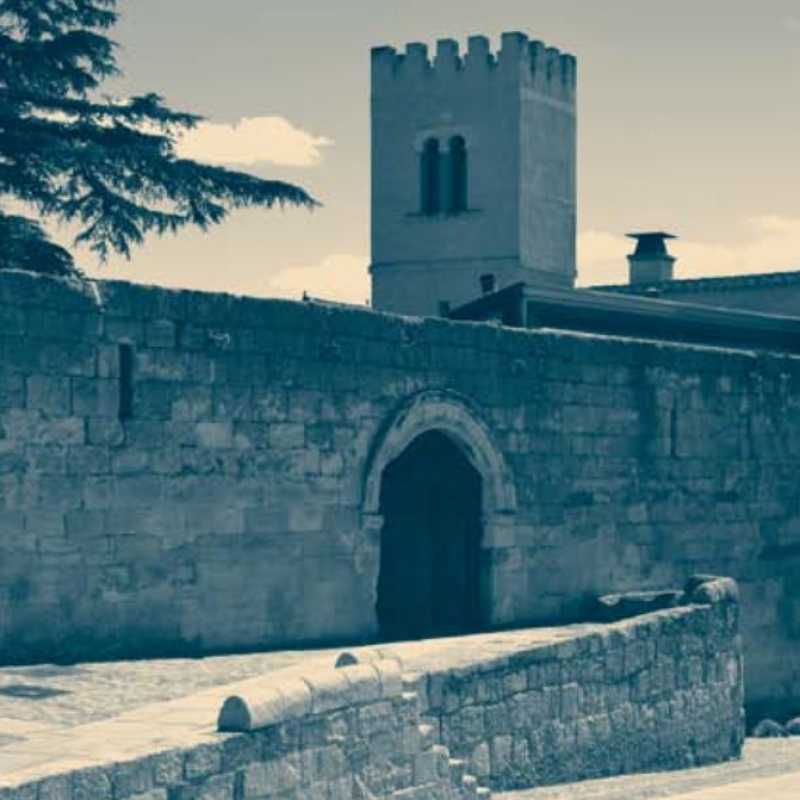
This civil Romanesque structure shares the first cur- tain wall—which extended as far as San Ildefonso—on one side and stands opposite the apse of the Cathe- dral. For some it is the house of the legendary warrior El Cid, whilst for others that of the equally influential preceptor Arias Gonzalo. Only the comparatively large rectangular floor-plan and the finely cut masonry of the exterior walls have survived to this day, although it did undergo a rather peculiar renovation in the 1950’s and 60’s conserving the eastern side with its central semicircular door frame decorated with plas- ter, sparse foliage ornaments, three arrow-slits and a line of corbels. The southern façade adjacent to Bis- hop’s Gate, or that of Olivares, is much more striking given that it shares the wall of the fortifications and includes two mullioned windows with horseshoe ar- ches that appear to date back to the 11th century, even though the building was greatly transformed throug- hout the 12th and 13th centuries.
Article...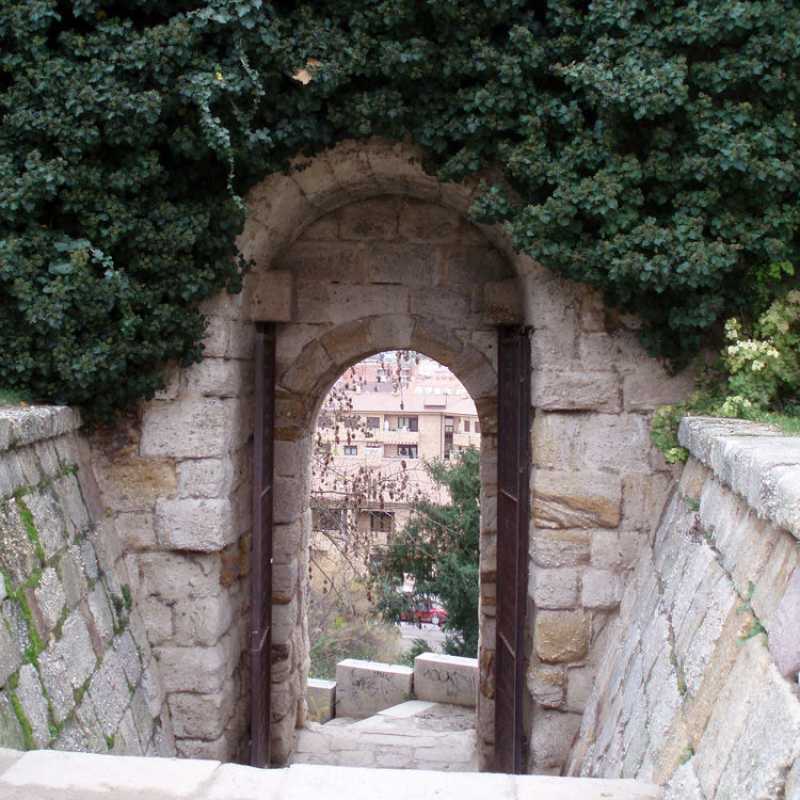
Traitor’s Gate (or Arena gate) with its simple rounded arch is an opening in the first curtain wall of the city of Zamora found very near the church of San Isidoro. According to legend, Bellido Dolfos assassinated King Sancho II, seizing the opportunity while the King was taking care of his corporal necessities to throw a poisoned dart and commit regicide. El Cid chased after him, but he escaped into the castle through this gate. Though no real documented proof exists of this event, an oral tradition supports this and other prodigious tales spun in the form of ba- llads which mutated throughout the Romantic era. In 2010, Traitor’s Gate came to be known as Loyalty Gate for, while Bellido betrayed a king, he was loyal to his queen, Urraca.
Article...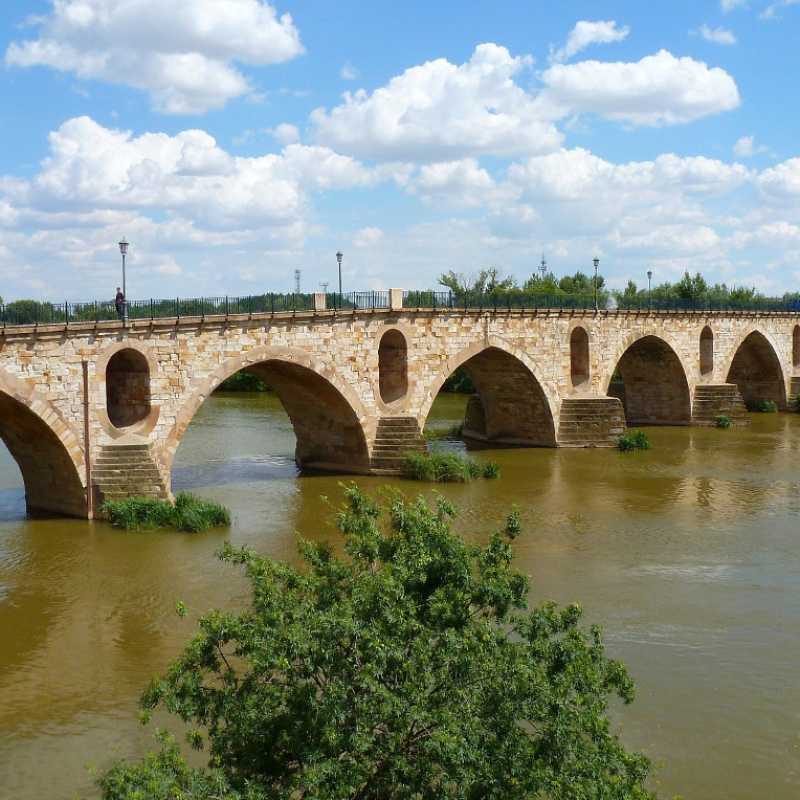
A document from 1167 denominates the bridge as new—pontem novum—and it shared its responsibilities with the “old” one until 1310, when the latter was destroyed by a flood. It contains 16 pointed arches as well as starlings and oculi to domesticate the brave waters of the river which rise after winter’s precipitations and the spring thaw. Its current appearance reflects that of the 13th century, although it did undergo significant restorative measures in the 16 th and 17th century (Pedro de Ibarra, Martín Navarro, Hernando de Nates and Antonio Carasa). For a time, the Stone Bridge used to accommo- date belfries at either extreme which served as watch towers to control the merchandise entering the town and to ensure the payment of tolls (La Gobierna towards the south). Between 1905 and 1907 the bridge suffered its most aggressive renovation, qualified by Gómez-Moreno as a “new attack on art followed by silent impunity”. The project promoted by Federico Requejo Avedillo was based on the necessity to facilitate the access of vehicles coming from the south of the city and implied the removal of the parapets and towers, the elimination of the last arch on the right bank and the di- sappearance of the gate which traversed the last curtain wall of the city.
Article...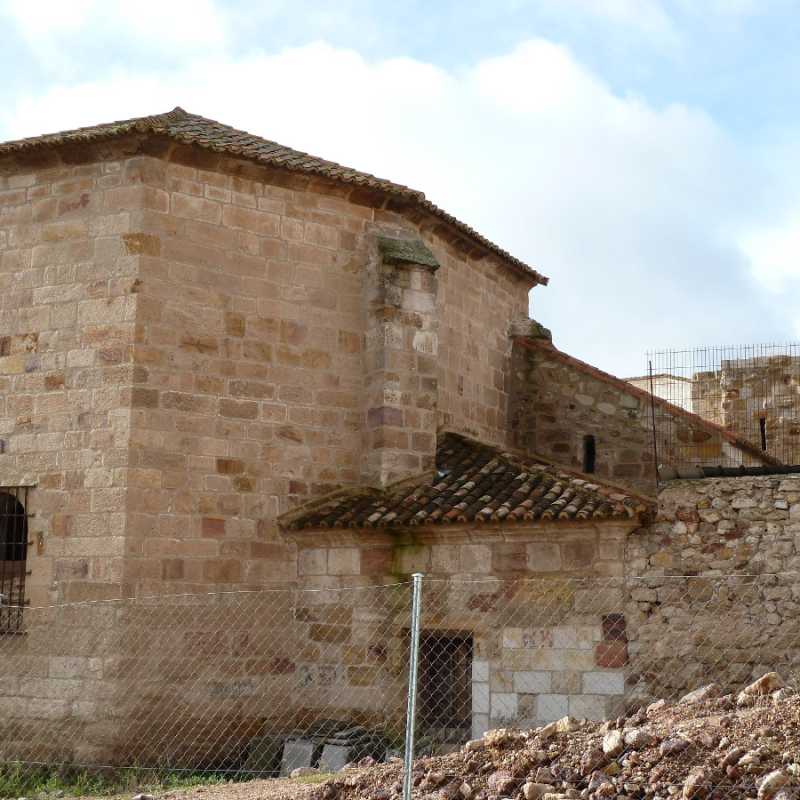
Little remains of this old Romanesque temple erected in the lower barrios of the city and whose appellation has clear French connotations. The west façade, with rusticated polychromatic ashlars, resembles the northern wall of Santiago del Burgo, or better yet the “transept of the Crusaders” in the church of the Holy Sepulchre in Jerusalem. On the same side there are some epitaphs from the middle of the 13 th century. Whilst before we could appreciate a Madonna and an interesting relief which was expatriated to the Metropolitan Museum of New York in 1926, now we see a synthetic Annunciation-Coronation of the Virgin, Saint Leonard liberating prisoners, miniatures imitating the umbrella dome of the Cathedral, a victorious lion and a pair of harpies with entwined necks.
Article...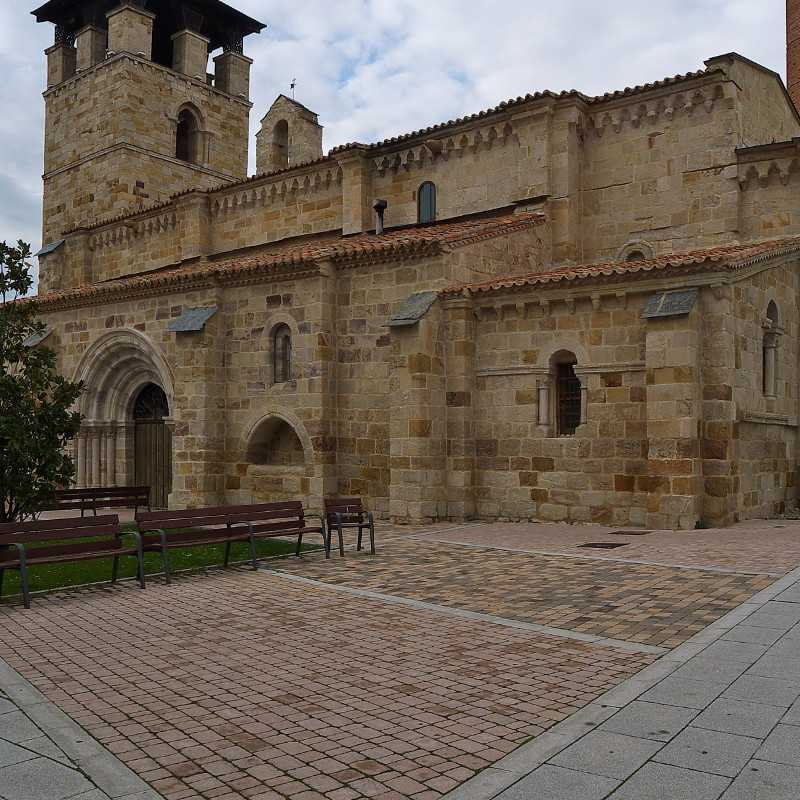
This great construction belonging to the Hospitaller Order of Saint John of Jerusalem was the main house of worship dedicated to the Virgin in the kingdom of Castile until 1537 when it became a convent occupied by a community of nuns from Fuentelapeña. The archive was safeguarded in the tower until the end of the 19 th century. It consists of only one nave from the 12 th century, three sections with ogival arches, a square presbytery and semicircular apse. The cornices, with their tre- foil arcs and modillions in the form of inverted pyramids, very closely resemble those of the Cathedral and the Collegiate Church in Toro. A sturdy tower was added to the west and several chapels adjoined to the walls on the south side with funerary functionality (one of which is covered with stellar rib vaulting and dates back to 1495, serving as the burial place of Juan de la Vega—servant and standard bearer of the Catholic Monarchs). To the north, where the cloister and the monastic quarters once were, a distillery was erected which was later reconverted into a hotel establishment.
Article...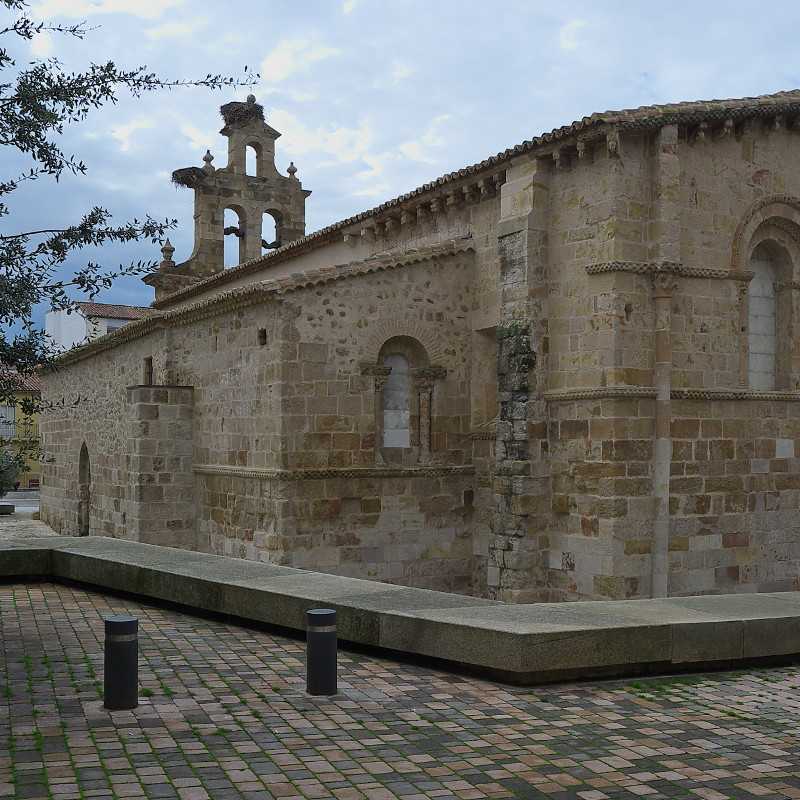
Santo Tomé was a monastery in 1126 and a beneficiary of the church of Santa María in Matela through princess doña Sancha, the sister of Alfonso VII. It received the town of Venialbo, conceded to the bishop and council of Zamora in 1135, and, while the finishing touches to the Romanes- que Cathedral took place, served as the Episcopal see in the me- antime. The chancel of the original building dates back to the first third of the 12th century and has three square cha- pels with billet moulding, alluding to Santa Marta de Tera, although its crude sculpture does not reach the excellence of the Collegiate Church of San Isidoro in León. A belfry was erected upon the western gable in 1832. Recent archaeological excavations have uncovered a medieval necropolis right next to the chancel.
Today it has been converted into the Diocesan Museum.
Article...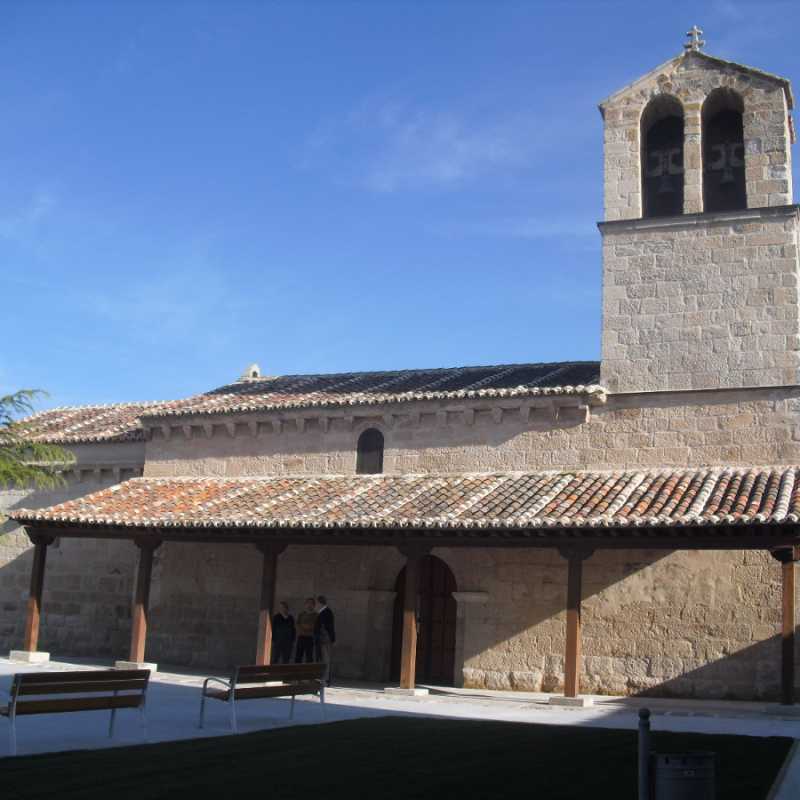
This temple belonged to the Order of the Holy Se- pulchre, mentioned as thus in a papal bull of Ho- norius II in 1128. It covered the liturgical and medical necessities of the settlers who repopulated the “extra pontem” area across the river and oppo- site the Cathedral from the 12 th century onward. The simple structure includes just one nave cove- red with timber trusses which conserve elements of the 15th century coffered ceiling. The main sanc- tuary is covered with a pointed barrel vault which lacks impost blocks at its inception. A ragged oculus perforating the west wall of the sacristy is the only evidence of the previous charge of the tiny adjunct cloister which was renovated by Cristóbal de Pa- rada, Francisco de Bustamante and Cristóbal de Medina en 1603. The excavations carried out here revealed the existence of the usual necropolis, in use until the 18th century. Furthermore, several fragments of painted murals dating back to the 14th century and narrating scenes from the Birth, Childhood and Passion of Christ in addition to the Throne of Grace have survived to this day.
Article...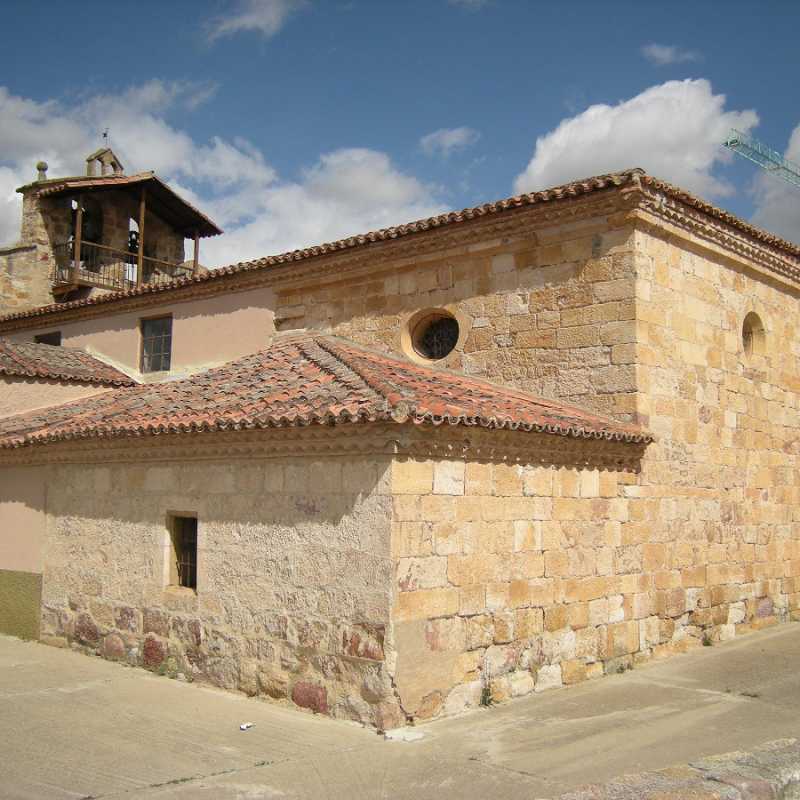
This church with one nave and timber roof trusses dates back to the 13 th century. Its semi-octagonal apse reinforced by angular buttresses is furnished with crude scotia concave modillions with representations of zoomorphic heads. Recent ar- chaeological surveys have discovered a funerary chapel near the north wall and have demonstrated that, contrary to the traditional hypothesis, the chronology of the atypical main chapel (of Saint Anthony) turns out to be posterior to that of the nave. They also discovered evidence of an ossuary and documented burials from medieval times to the 19 th century. In the 16 th century, the church was en- larged with the addition of a new nave on the south side, accessible through two great wide arches. Next to the temple of San Frontis, in the centre of the homony- mous suburb on the left bank of the Duero, celebrating the site where an inn once stood, there exists an epigraph to its founder: Aldovino de Perigord, a canon of the Cathedral of Zamora who passed away in 1215. Distinguished temples of Zamora like San Leonardo, San Antolín, la Magdalena and the Cathedral emerge intertwined among the numerous patent remembrances of its history and devo- tional-hagiography.
Article...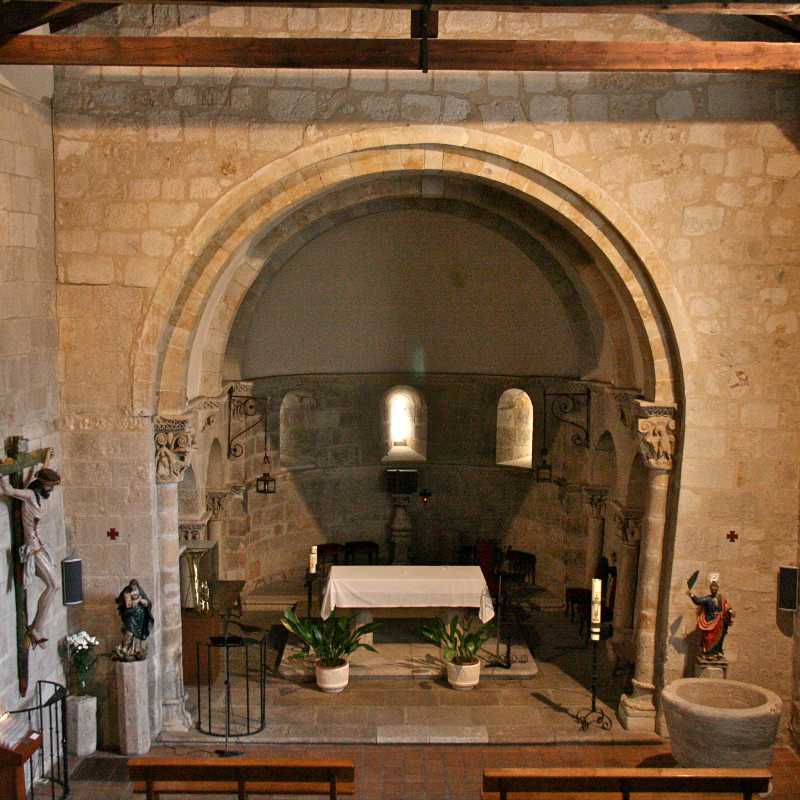
One nave, a square presbytery and a semicircular east end, whose apse is enlivened by blind arches in the interior, comprise this church. Though the first indirect news of San Claudio de Olivares dates back to 1176, the interesting zoomorphic capitals allow an incisive Gómez Moreno to imply a connection to the groups of sculptors from Frómista and Santillana del Mar (1125-50 A.D.), with yet another possible northern inspiration found in Santa María de Villanueva in Cazana (Teverga). Above the north entrance—presided over by the lamb which symbolizes Christ the Saviour—a rather eroded yet very interesting liturgical calendar is found. It is a late model yet very richly and distinctly Spanish given the presence of everyday scenes like the threshing season in August and the motives of thirst in July.
Article...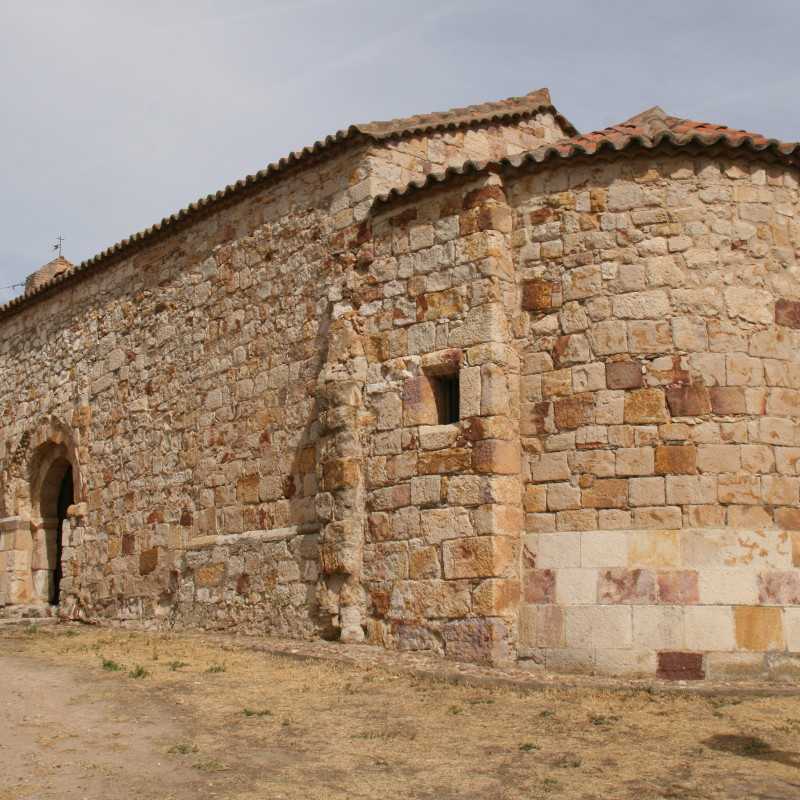
This small humble church composed of one nave, square presbytery and semicircular apse covered with a quadrant vault can be found in the shadow of the Cathedral in a field west of the old town known as “la Vega”. Legend has it that El Cid, don Rodrigo Díaz de Vivar, was knighted here. The enig- matic capitals of the double chancel arch along with those configuring the adjacent section of the apse stand out. The stonema- sons, that vaguely remind us of those from Santander, sculpted here clutters of apposi- tional birds, felines, snakes, rough bovid and anthropomorphic simian figures tied at the neck and waist, as if it were a jumble of cir- cus acrobats and tightrope walkers that Gómez-Moreno described as “incomprehensible and barbaric”.
Article...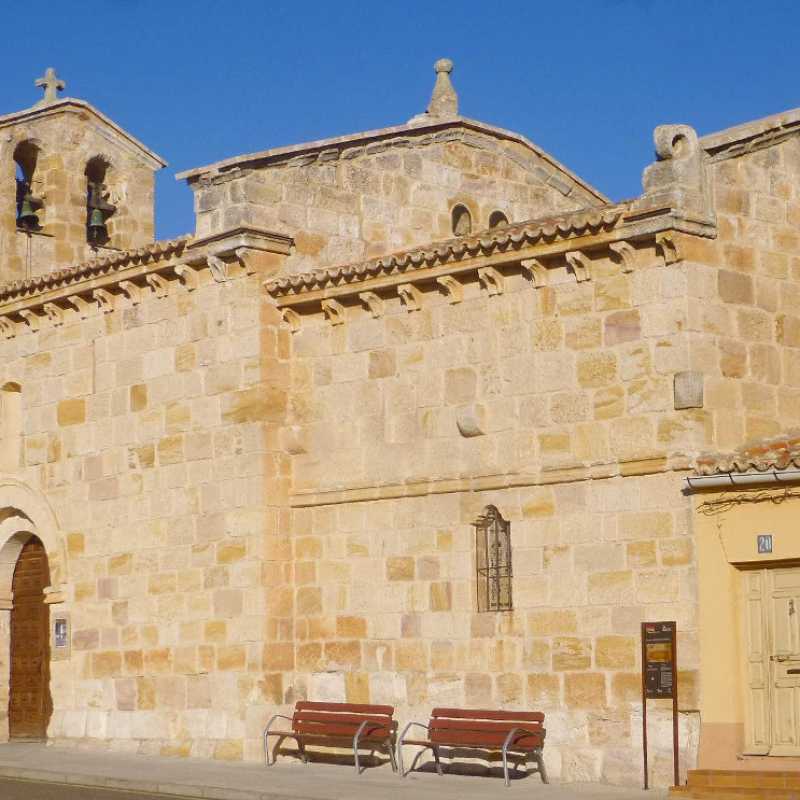
This church was erected next to the city on the homonymous settlement whose jurisdiction was conceded by Alfonso IX in 1222. The church was foun- ded by Dean Juan and consecrated by Bishop Martín in 1211. A hospital once existed beside the temple. The flat façade merits special attention as it is pierced by a lovely rose window whose tracery reminds us of San Juan de Puerta Nueva and Santiago del Burgo and the acroteria in its eaves take us to the Cathedral and Santiago del Burgo, as well. The main chapel is covered with a pointed barrel vault and semicircular transverse arches. The roof structure was redone considerably in the 15 th century and converted into a collar beam structure. It houses a crucified Christ figure from the 15th century, remains of mural paintings from the end of the 13 th century and a tiny isolated cloister where collation readings take place on the day of Saint Isidore.
Article...Near the old chapel of Santa María de los Olleros or de la Vega, in the settlement which bears the same name, los Remedios finds itself compressed between the walls pertaining to the convent of the Daughters of Charity. The floor plan imitates a basilica with three naves and the remains of cruciform pillars. The south wall exterior with the blinded round arch of its original door and the cornice’s unprecedented superiority in corbel design present evident indications of their being constructed in the early 13 th century. Throughout the 18th century, many additions were carried out which disguised the original vaults with plaster moulding and traced a dome upon pendentives in the first section of the central nave.
The bell gable and porch were added in 1858. During the restoration of 2009, an adjoining necropolis was excavated.
Article...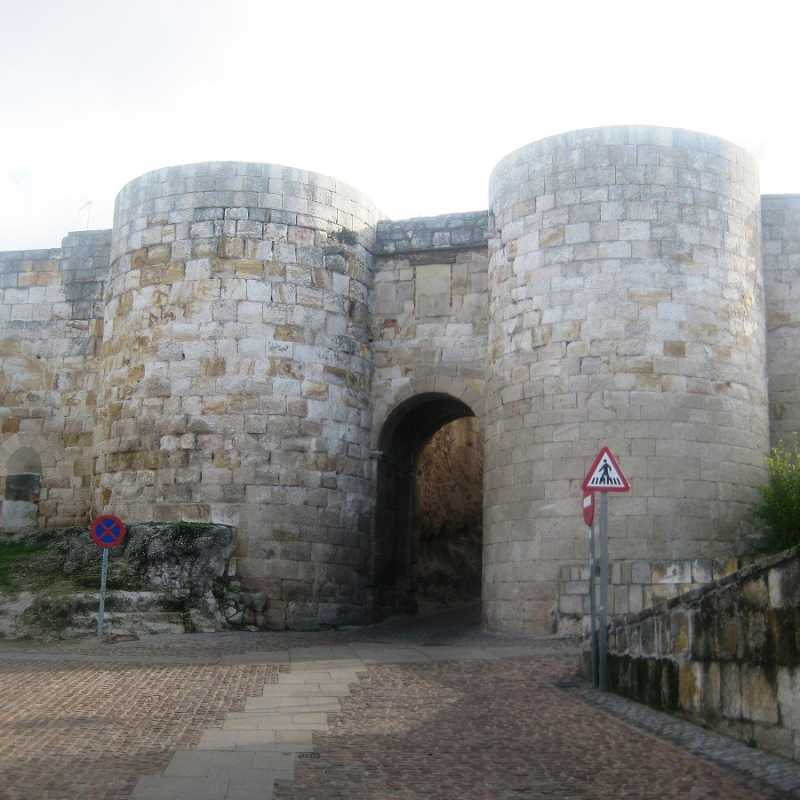
Once known as Zambranos Gate, or Queen’s Gate, the new appellation Urraca is said to come from the crumbling escutcheon above it, but it has eroded so greatly that it appears to come from some indefinite age and merely a bust under a series of arches can be devi- sed. To say that it is the bust of a lady would be too much, as others have insisted in iden- tifying it as the face of the Umayyad prince Ibn al-Quitt, whose head was hung from the gates of the city by Alfonso III after the campaign of 901. The gate is flanked by well-restored to- wers: burly stone blocks which support the three round arches which date back to the 13 th century.
Article...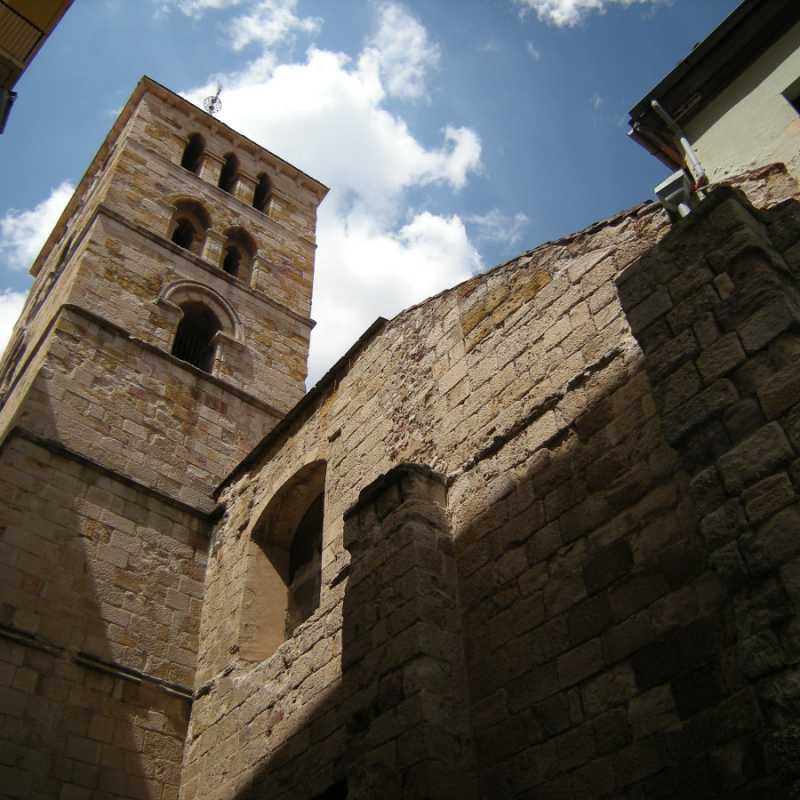
The current building lies imbedded between the adjacent constructions, but its pilas- ters and buttresses reveal what once was a temple with three naves and four sections.
The gable end and west door conserve their Romanesque style with primitive foliage work hinting at influences from la Magdalena’s south portal. The tower used to be the most glamorous of Zamora, although the upper sections present more Gothic designs, like San Cipriano or San Leonardo, topped with a slate-covered spire skewered with a sharp octagonal steeple. The chancel is modern, containing one nave sectioned by transverse arches dating back to the 16th century and covered with plaster cast vaults.
Article...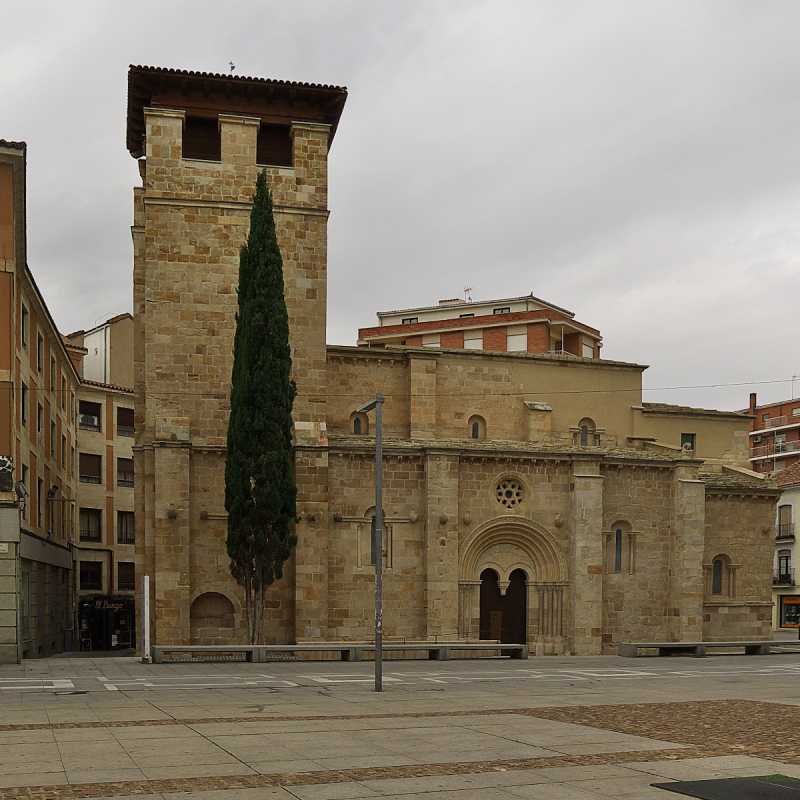
It is one of the most charismatic churches of Zamora’s Romanesque with its flat-faced triple chancel and three naves with four sections covered with raised groin vaults, standing upon pillars with engaged columns, which change to barrel vaults in the sections nearest the west end of the church or in the chapels of the lateral naves; and finally become ribbed in the chapel of Villarreal and the west end of the north aisle. An impressive tower presides over the southwest corner of the temple. The south door is the most attractive with its span divided in two round arches such that the smooth tympanum rests upon a dangling capital, all of which is surrounded by four round archivolts. Towards the west, another door opens among foiled archivolts below a rose window whose tracery imitates that of the Bishop’s Door on the Cathedral and the south wall of San Ildefonso; the last door faces north and is decorated with four archivolts with rusticated voussoir (like those of San Leonard). In its interior, an interesting lapidarium conserves heterogeneous pieces—capitals, keystones, fragments of an oculus, a lion which served to support a sarcophagus and chequered stone slabs—found during the last restoration. Until the end of the 19 th century it belonged to the diocese of Santiago de Compostela.
Article...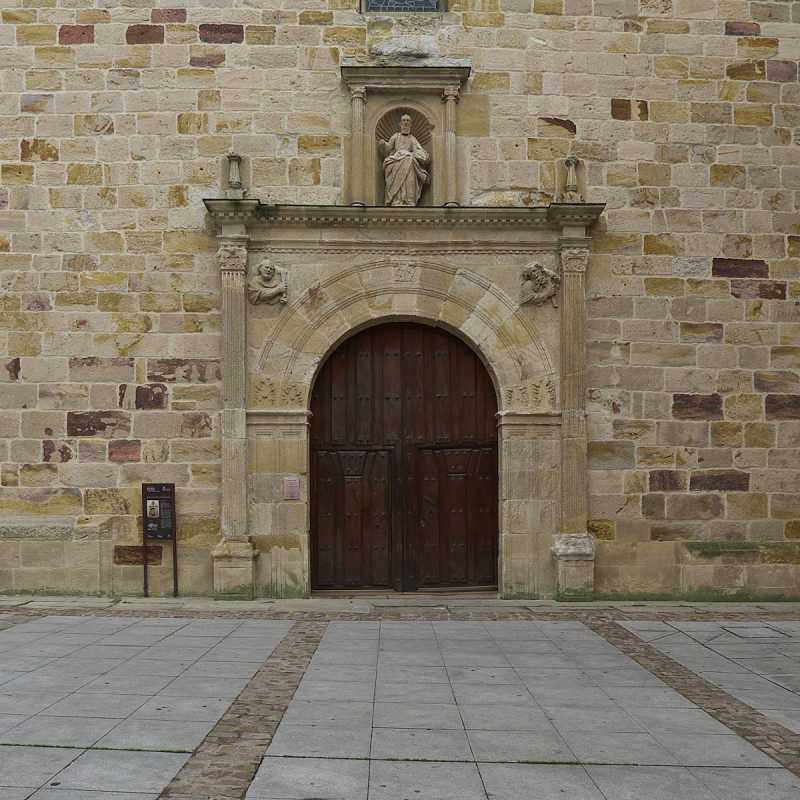
The Romanesque temple which existed here with the identical appellation also christened one of the fortified gates of the second curtain wall (which stretched as far as Santa Clara street after the urban expansion of the 12 th and 13 th centuries), but the medieval church was completely rebuilt in accordance with the last will and testament of Antonio de Sotelo: a figure who participated in the conquest of Mexico along with Cortés. In 1551, the architect Martín Navarro from Salamanca delineated a duplicated chancel to share the parish altar and the private chapel of the Sotelo family imposing a Plateresque dialogue impregnated with Gothic elements. The nave was also rearranged with pointed transverse arches, although the private funerary chapels were maintained.
Article...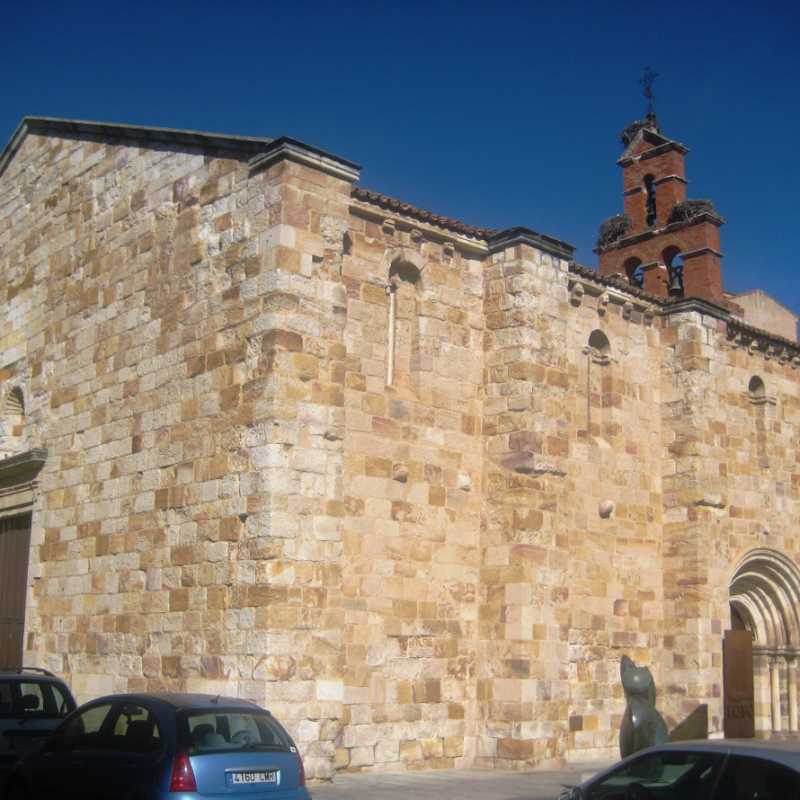
This temple may have belonged to the old monastery documented in 1186. Located in the interior of the second curtain wall of the city, it preserves some similarities with Santiago del Burgo (capitals, corbels, cornices and acroterion). In the 13 th century, it was composed of three naves with four sections denoted by large buttresses and a square triple chancel. The south door has three round archivolts with smooth convex and semi-concave moulding and capitals with foliage, almost the entire south side included a portico atrium supported by smooth corbels. The simpler north door is decorated with smooth archivolts. The interior of the church was greatly reformed in 1768, reconverting the three naves in one and decorating the vaults with lunettes and elegant works of plaster, although the pointed transverse arches of the 13 th century can still be seen. In 1905 the church was donated to the Claretian monks and mass was celebrated there until 1986. In 1993, it was renovated once more.
Article...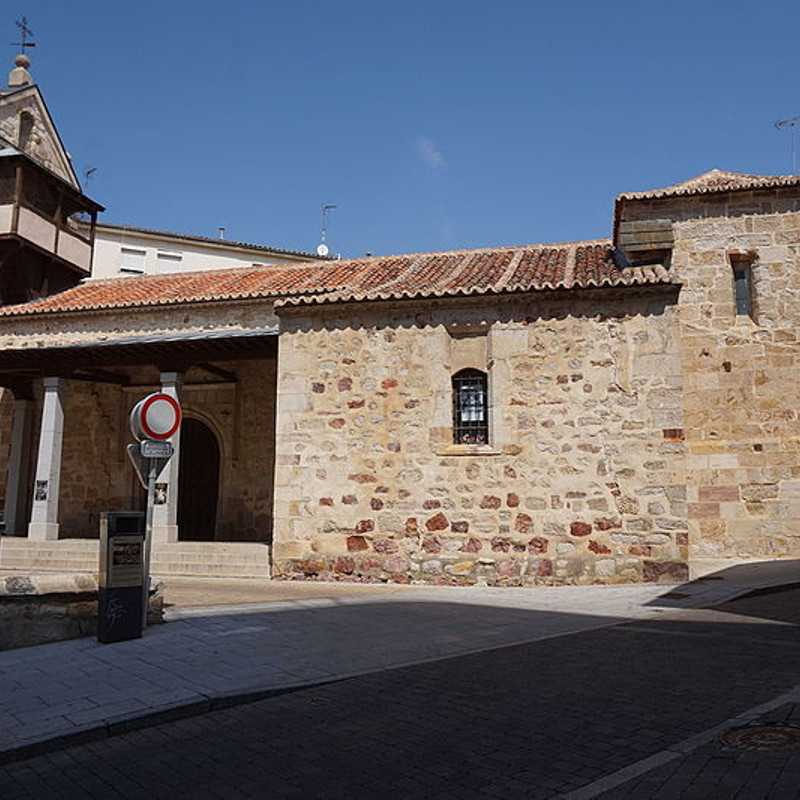
This church was constructed in the 13 th century in the barrio of la Lana, a sector which was repo- pulated by settlers from Palencia. Some of the original elements remain: the wall to the left of the main door and the entrance to the old sanctuary, with a pointed duo chancel-arch. It once contained one nave covered with wooden cross frame and a quadrangular apse somewhat lower and narrower. It also presents a rudimentary transept which dates back to the first half of the 16th century, like the entrance framed by a curious “alfiz”.
Article...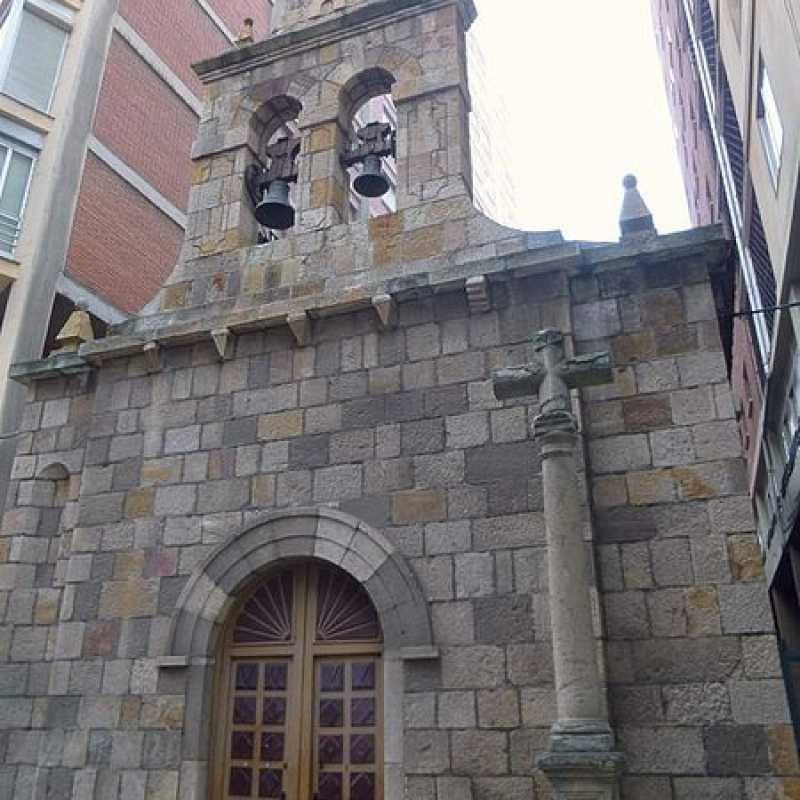
The shrine of Our Lady of Mount Carmel was built in front of the antique gate of San Torcuato, outside the city wall, cerca 1200. Because of the urban sprawl, it was razed and rebuilt near its original location in accordance with a project of Alfonso Crespo in 1967. The original chapel had only one nave, a sanctuary with an alcove and a chapel dedicated to the Cristo del Camino adjacent to the north side. It conserves the funerary arcosolium of Menendo Bermúdez, deceased in 1234, and the remains of a choked serpent above the entrance—surely a votive offering which feeds curious legends.
Article...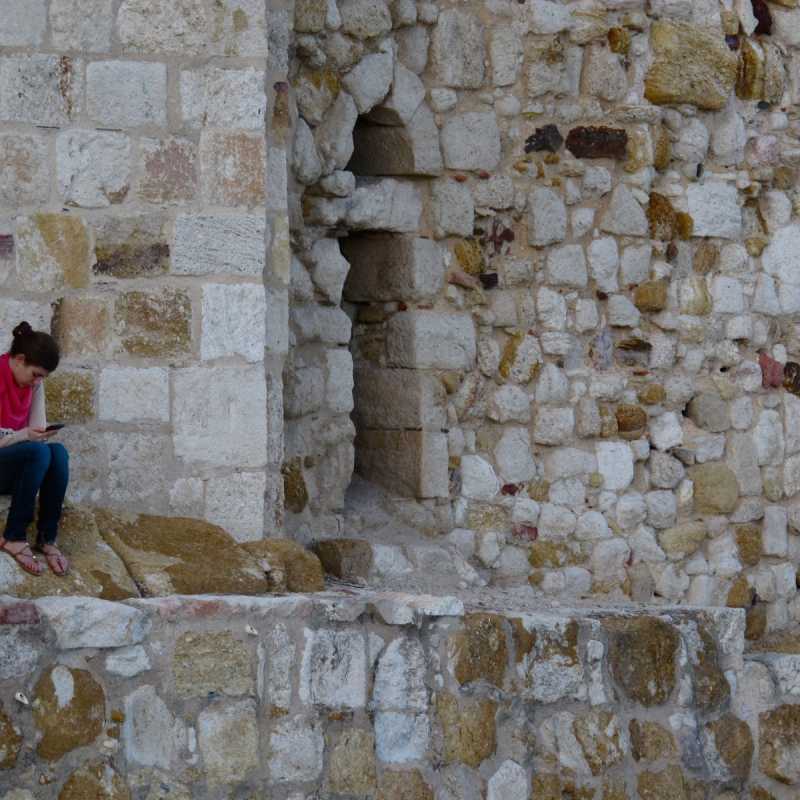
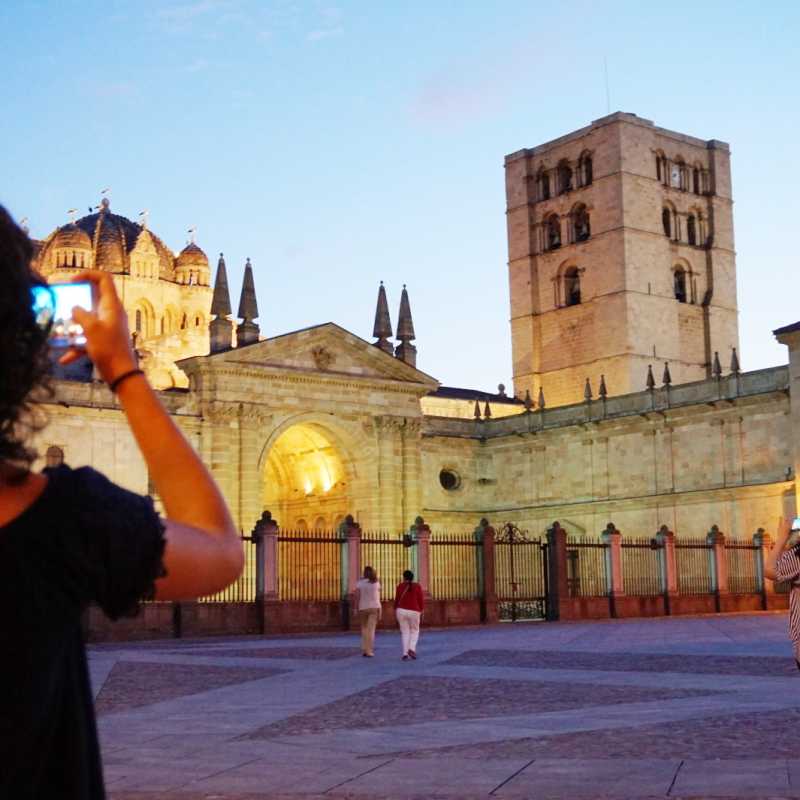
The Cathedral of the Saviour (1151-1174). The most important monument of Zamora, conceived by Bernardo, Cluniac monk of French origins, around 1139 and under the protection of King Alfons the 7th. The dome constitutes the most characteristic element of the cathedral and one of the most amazing creations of Spanish medieval art. Its interior, austere in decoration in accordance with the Cistern doctrine, rises above a Latin cross base with three naves spaced in four square sections with groin vaults in the central nave. The magnificent woodwork of the chorus merits special attention. The cathedral’s museum houses one of the best collections in Europe of Flemish tapestries from the 15th to the 17th century.
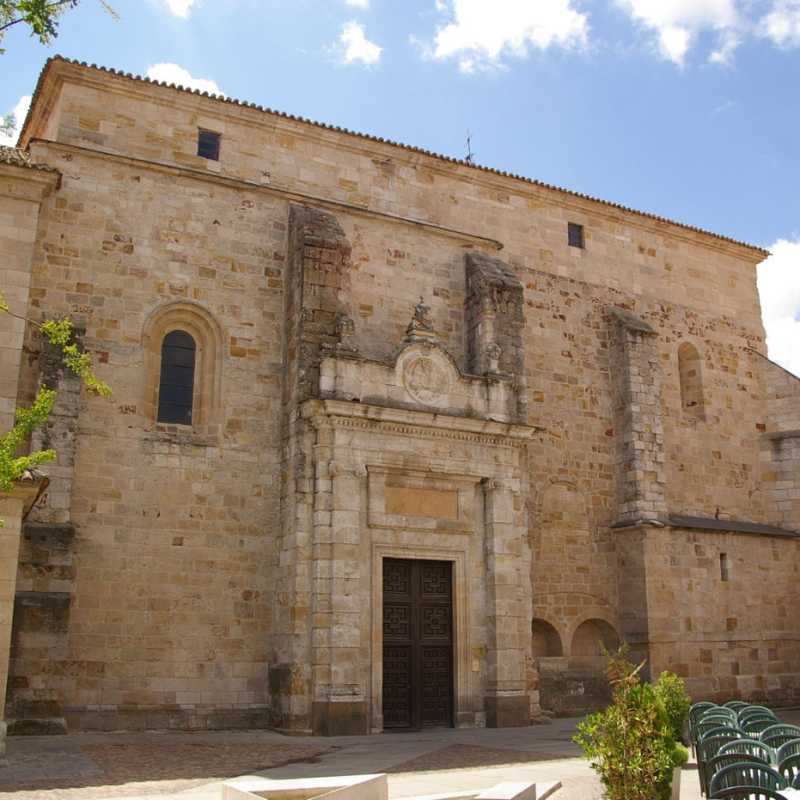
San Pedro y San Ildefonso (12th – 15th c.). After the cathedral, the most important church of the city, originally dedicated to Saint Peter, the discovery of the body of Saint Ildephonsus provoked the change of its name. It was built upon the antique Visigoth church of Saint Leocadia. The triple-apsed chevet appears to be inspired in the Colegiata of Toro. In the interior Saint Atilano and Saint Ildephonsus are buried and their history is narrated by the polychrome antependium.
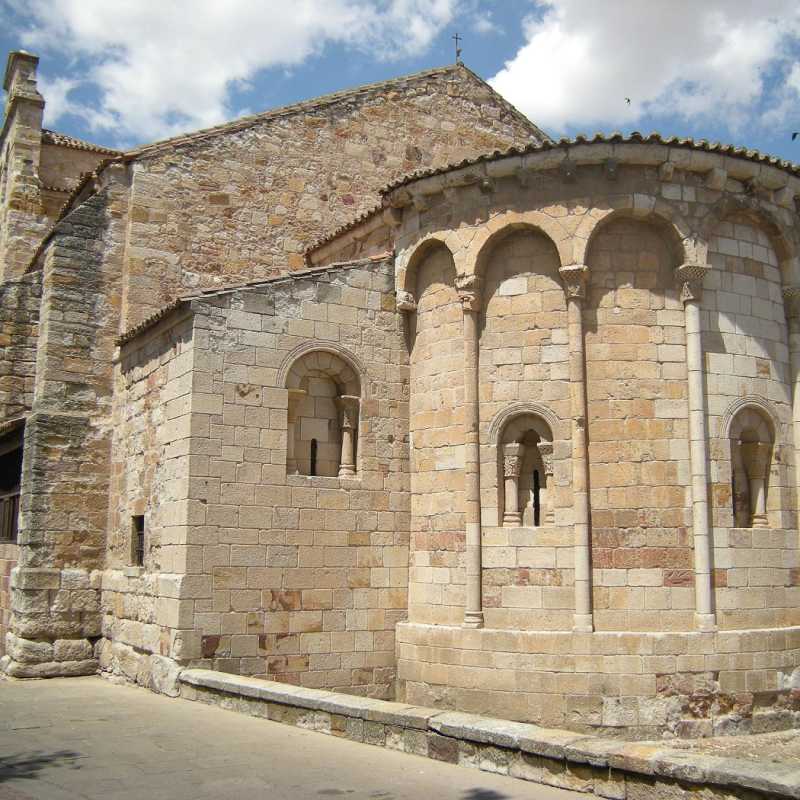
Santa María la Nueva (11th-12th c.) The church had two parts: an older one from the end of the 11th c. of which the East End and South Portal are conserved, and another rebuilt at the end of the 12th c. after the fire in the so-called “Trout Uprising”, an incident in 1158 decisive in understanding the tensions between the aristocracy and the peasants. It conserves a magnificent semicircular apse and its interior includes a great chapiter which supports the altar.
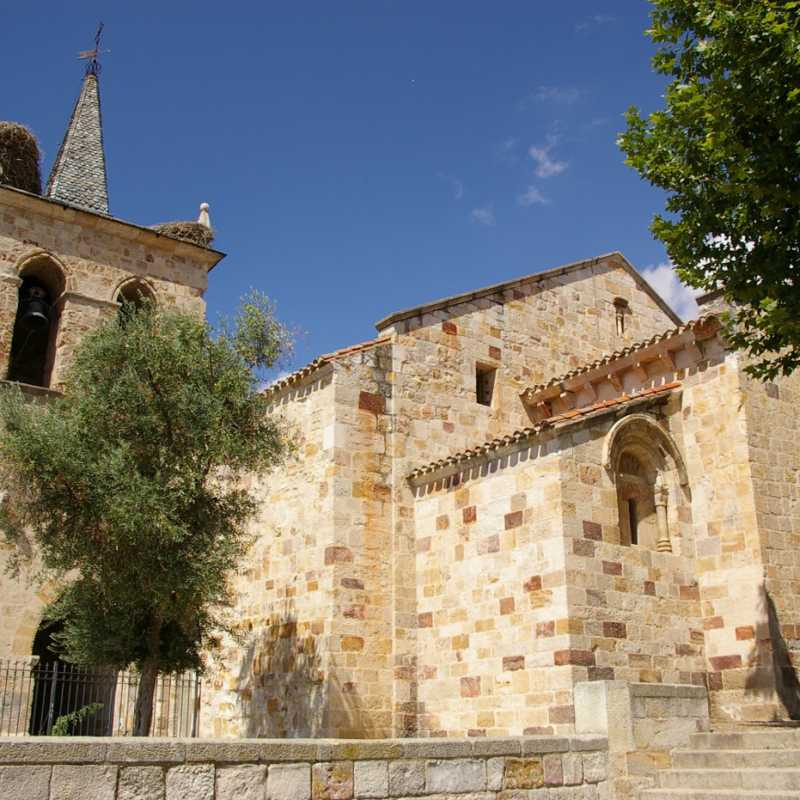
San Cipriano (11th – 12th c.). Located along the first curtain wall is one of the oldest churches in the city which its primitive style denotes. The square triple apse represents the oldest part of the temple. In the South Wall, the only original portal conserves several reliefs: a blacksmith, Saint Peter with the key and the Apocalyptic Beast. The magnificent acoustics make it the scene of important music events such as the “Pórtico de Zamora”, which takes place just before Holy Week.
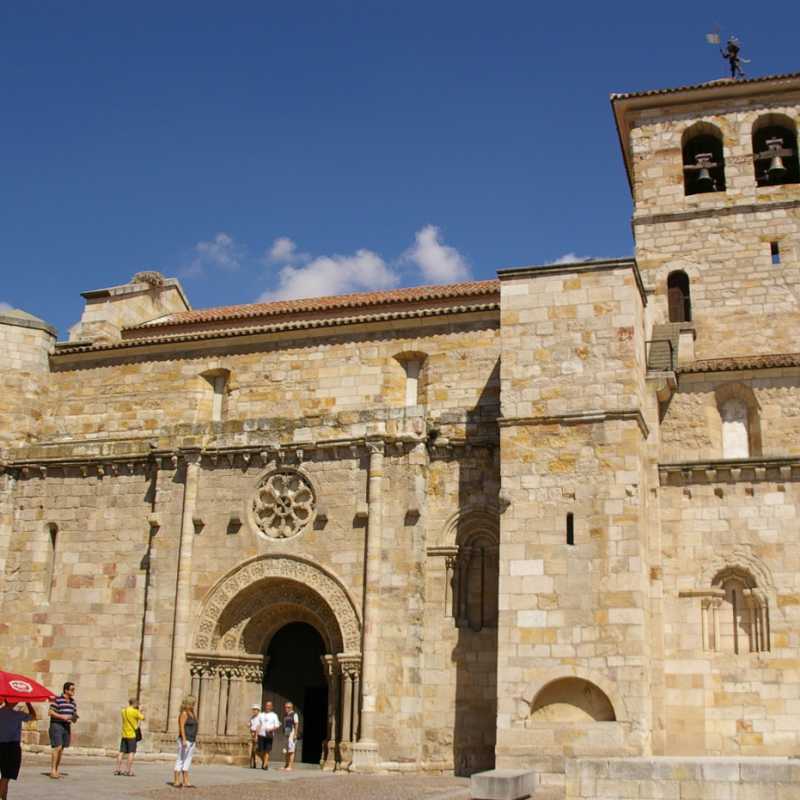
San Juan de Puerta Nueva (12th-13th c.). Just beyond the first curtain wall in which the easternmost gate which gives name to the temple would be opened in 1171. The magnificent rose window on the South End merits special attention. Inside, two enormous arches divide one nave covered with a gorgeous Mudejar coffered ceiling.
This church from the mid-12th century preserves the northern wall with chequered eaves and sim- ple modillions. The rest of the construction must have been built throughout the first half of the 13 th century. It includes a flat walled apse upon which a Baroque oriel was superimposed; one nave in three sections established by buttresses visible from the exterior; portals, cornices and a curious inlaid sepulchre on the north wall capped with a massive lintel with birds and angelic acolytes cru- dely mimicking those of la Magdalena. The belfry on the western gable dates back to the early 19 th century with similar characteristics to the one con- served by the chapel of los Remedios
Article...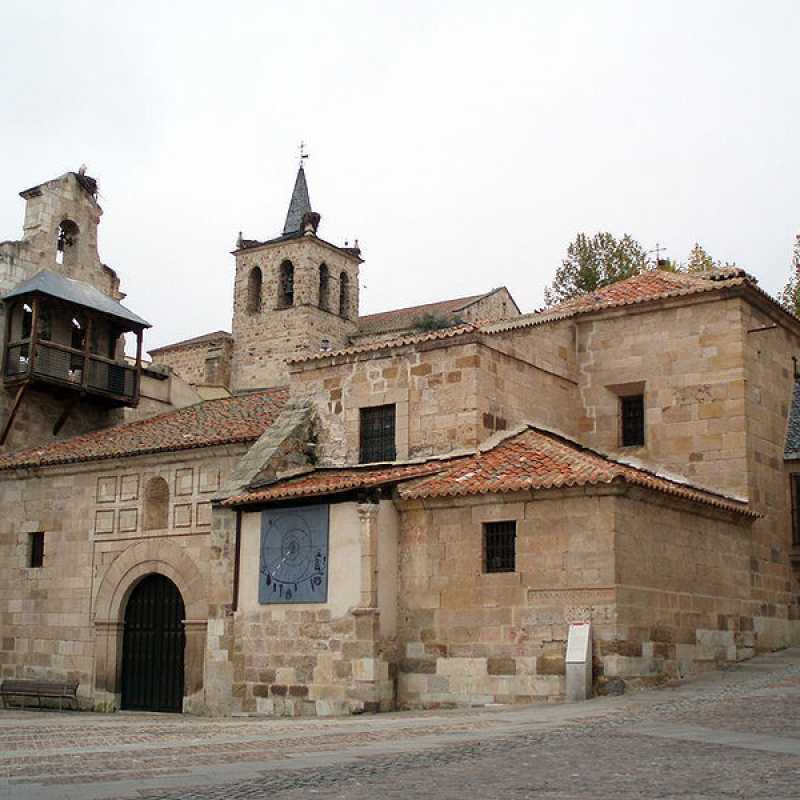
The original temple was constructed at the end of the 12th century or beginning of the 13th in the so-called “Puebla del Valle,” or Settlement of the Valley, near the lower barrios of the city where the Jewish quarter was found and the main artisan activi- ties were carried out (especially tanning and pottery). It may have been composed of three naves, of which only the original north wall remains intact, crowned by eaves with simple corbels. On the west end of the southern aisle, a chapel covered with a Gothic ribbed vault was raised in 1524. During the 17th
century, the three ori- ginal naves were reduced to one, perhaps due to structural issues, and sturdy tra- verse arches were built to support a gable roof. The flat faced apse was also renovated with a Baroque oriel covered with slate tiles. The simple southern door, with an empty adoration recess, dates back to the 17th century. The bell gable on the west wall was reconstructed in 1746. Currently, the church houses the lapida- rium which can be visited at the Museum of Zamora.
Article...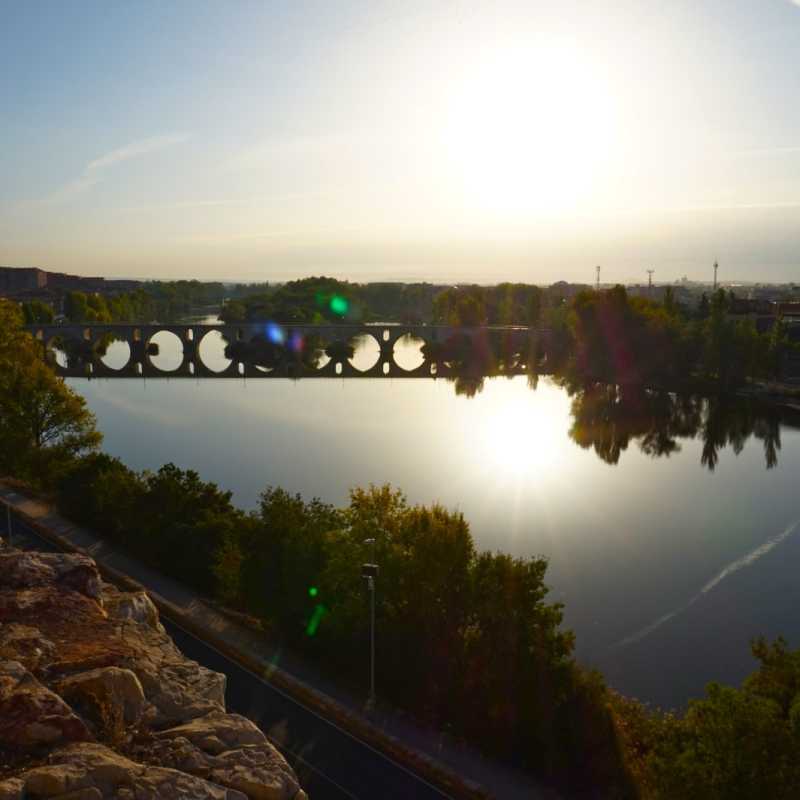
A document from 1167 denominates the bridge as new—pontem novum—and it shared its responsibilities with the “old” one until 1310, when the latter was destroyed by a flood. It contains 16 pointed arches as well as starlings and oculi to domesticate the brave waters of the river which rise after winter’s precipitations and the spring thaw. Its current appearance reflects that of the 13th century, although it did undergo significant restorative measures in the 16 th and 17th century (Pedro de Ibarra, Martín Navarro, Hernando de Nates and Antonio Carasa). For a time, the Stone Bridge used to accommo- date belfries at either extreme which served as watch towers to control the merchandise entering the town and to ensure the payment of tolls (La Gobierna towards the south). Between 1905 and 1907 the bridge suffered its most aggressive renovation, qualified by Gómez-Moreno as a “new attack on art followed by silent impunity”. The project promoted by Federico Requejo Avedillo was based on the necessity to facilitate the access of vehicles coming from the south of the city and implied the removal of the parapets and towers, the elimination of the last arch on the right bank and the di- sappearance of the gate which traversed the last curtain wall of the city.
Article...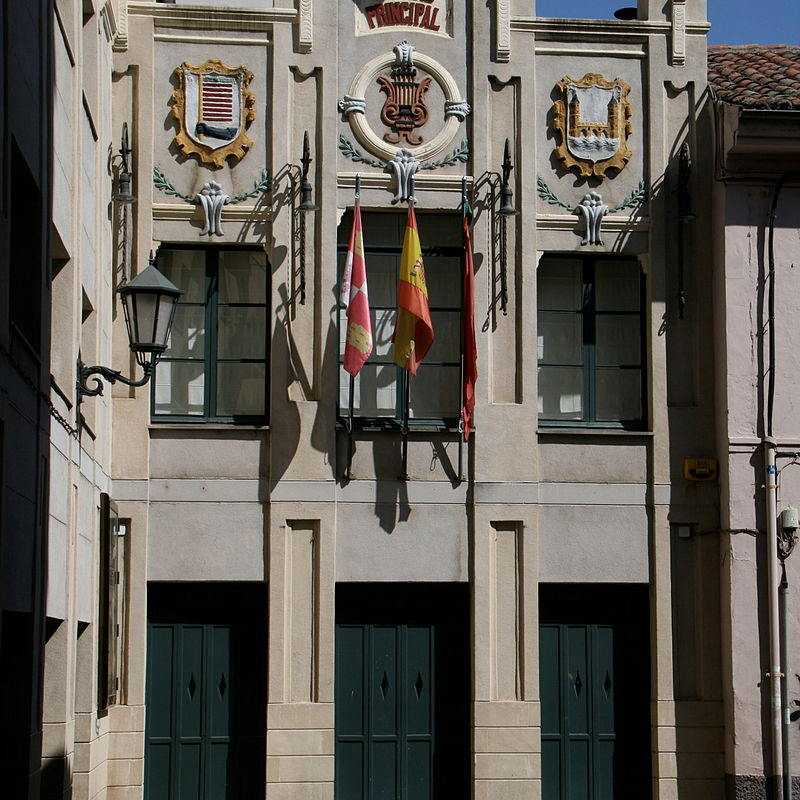
Built upon the old patio of comedy which dates back to the 17th century, the current structure of El Teatro Principal was finished in 1874 following the Baroque style of a theatre a la Italiana. Due to its reduced dimensions, it is popularly known as la bombonera: literally “the chocolate box”, figuratively “the cozy home”. Seating is limited to 360 people.
Contact Info:
C/ San Vicente s/n, 49004 Zamora
Administration Tel.: +34 980 534 719
Ticket Office: +34 980 530 751
teatroprincipal@zamora.es